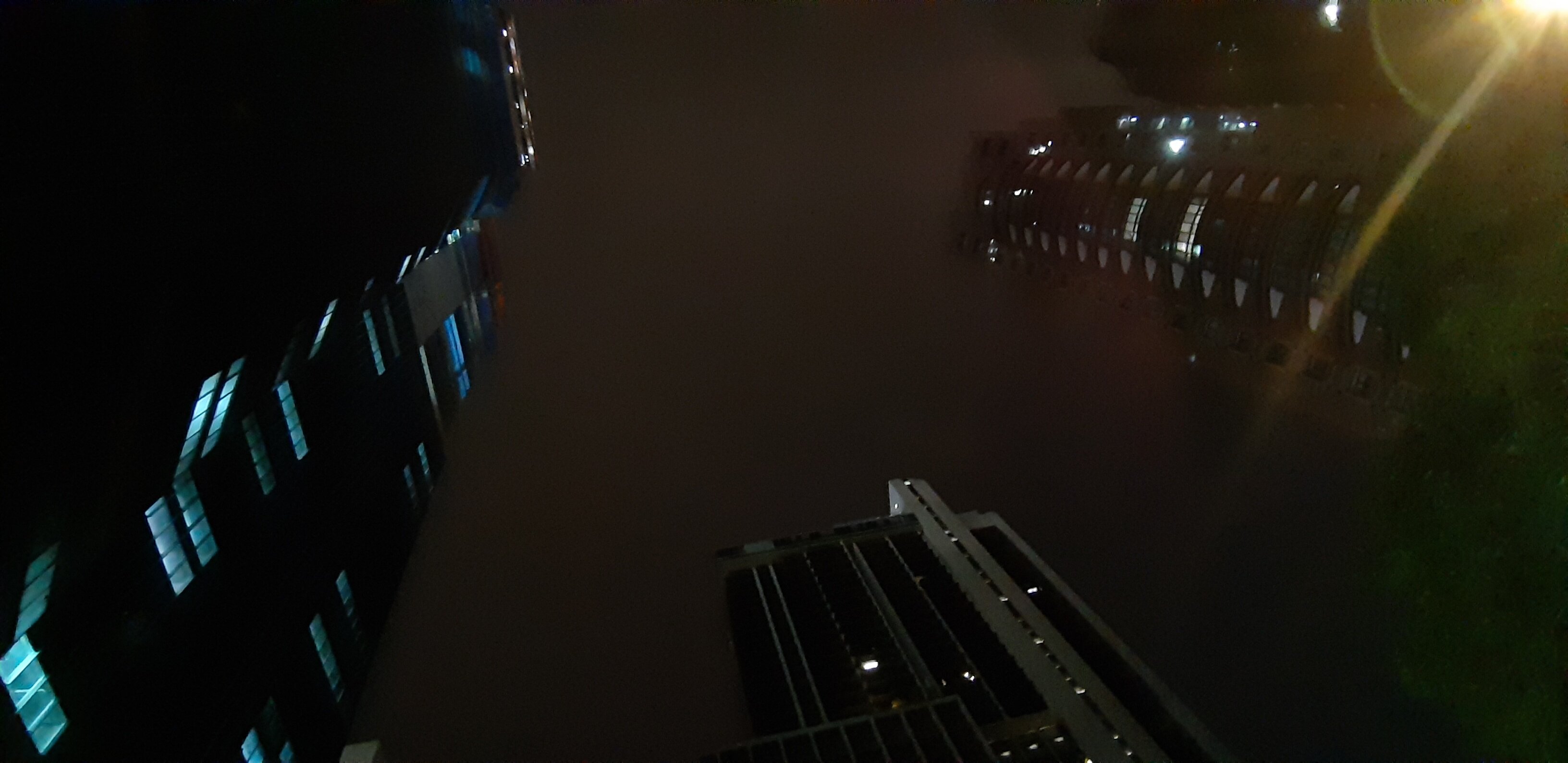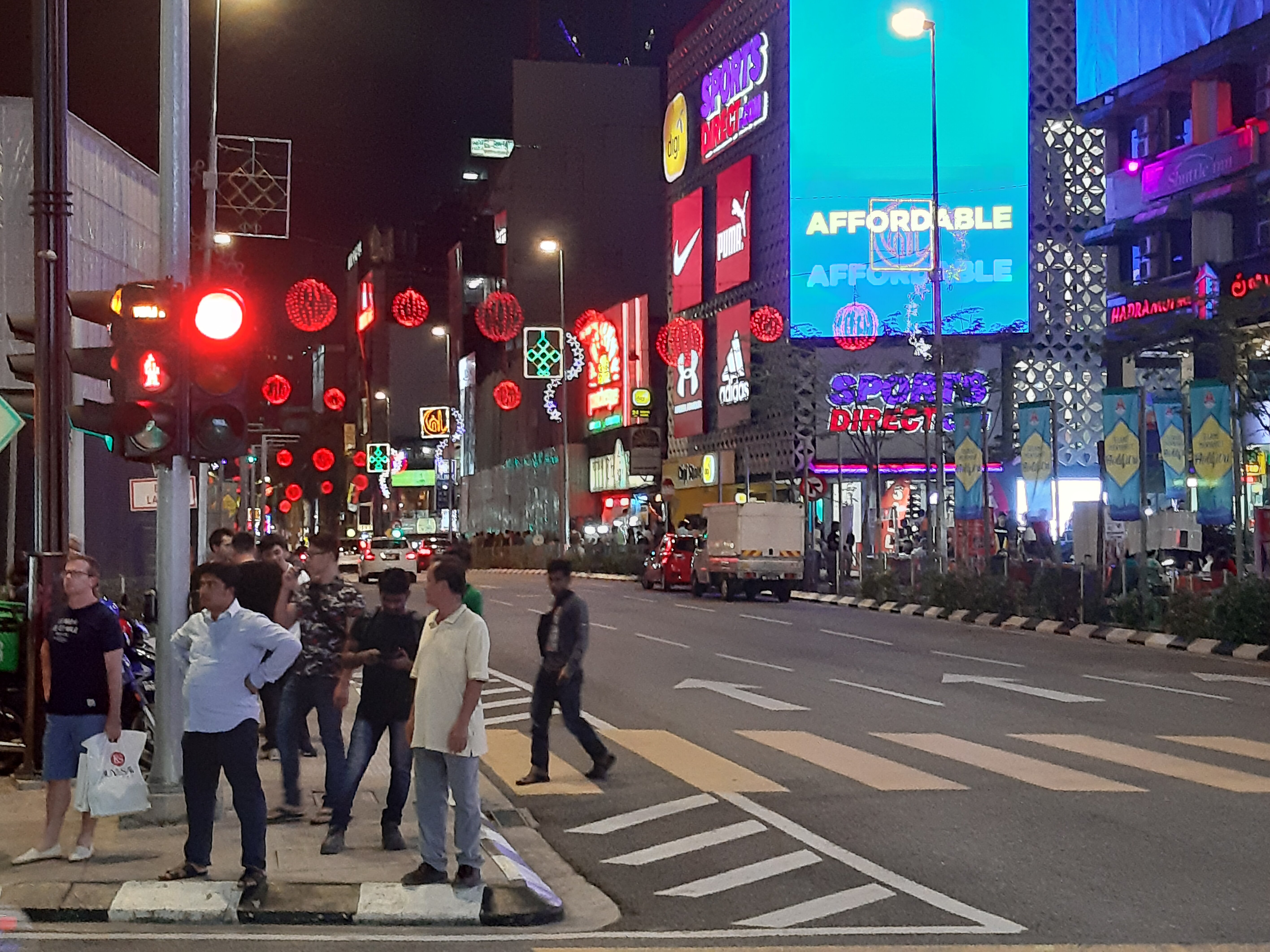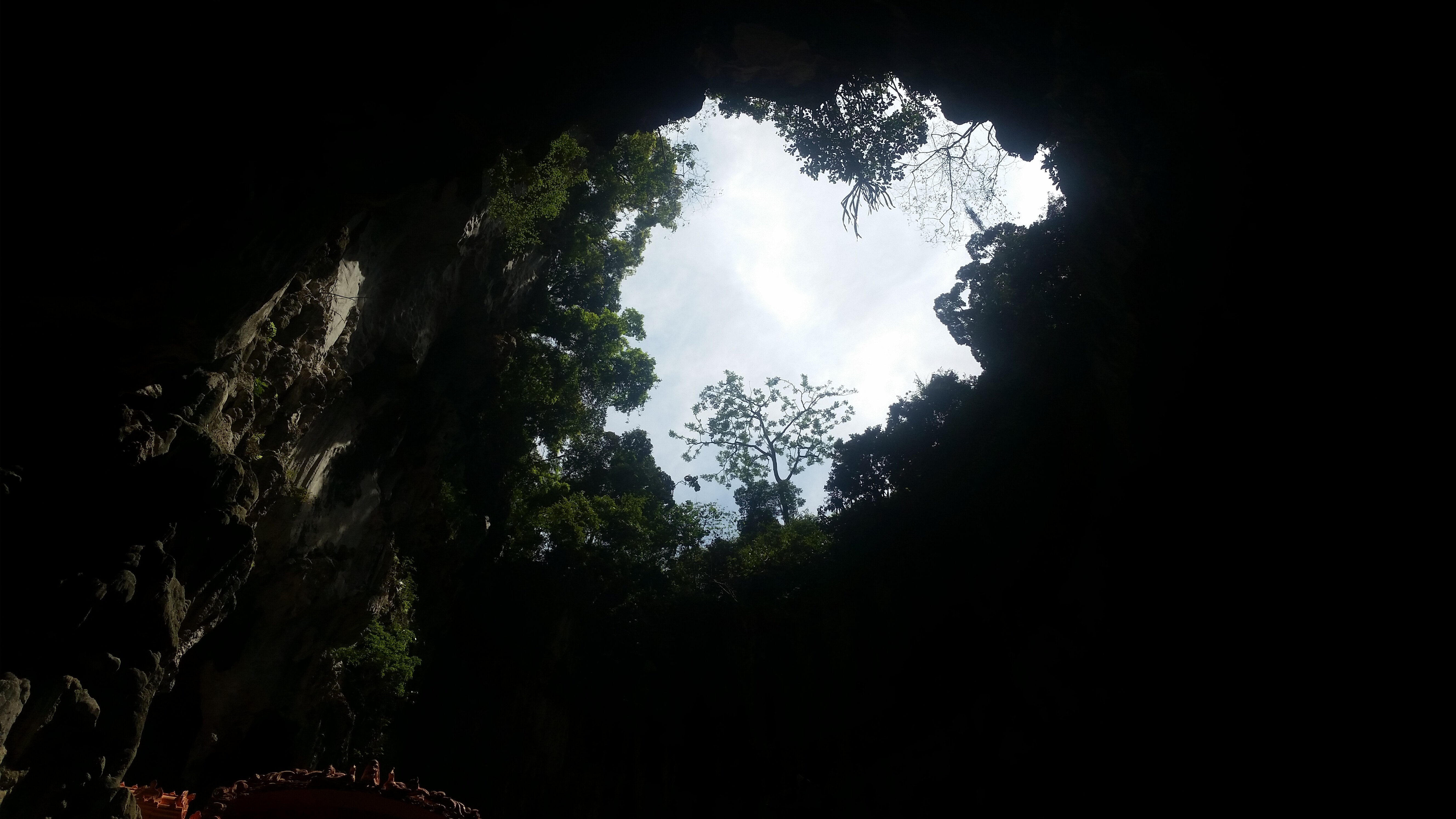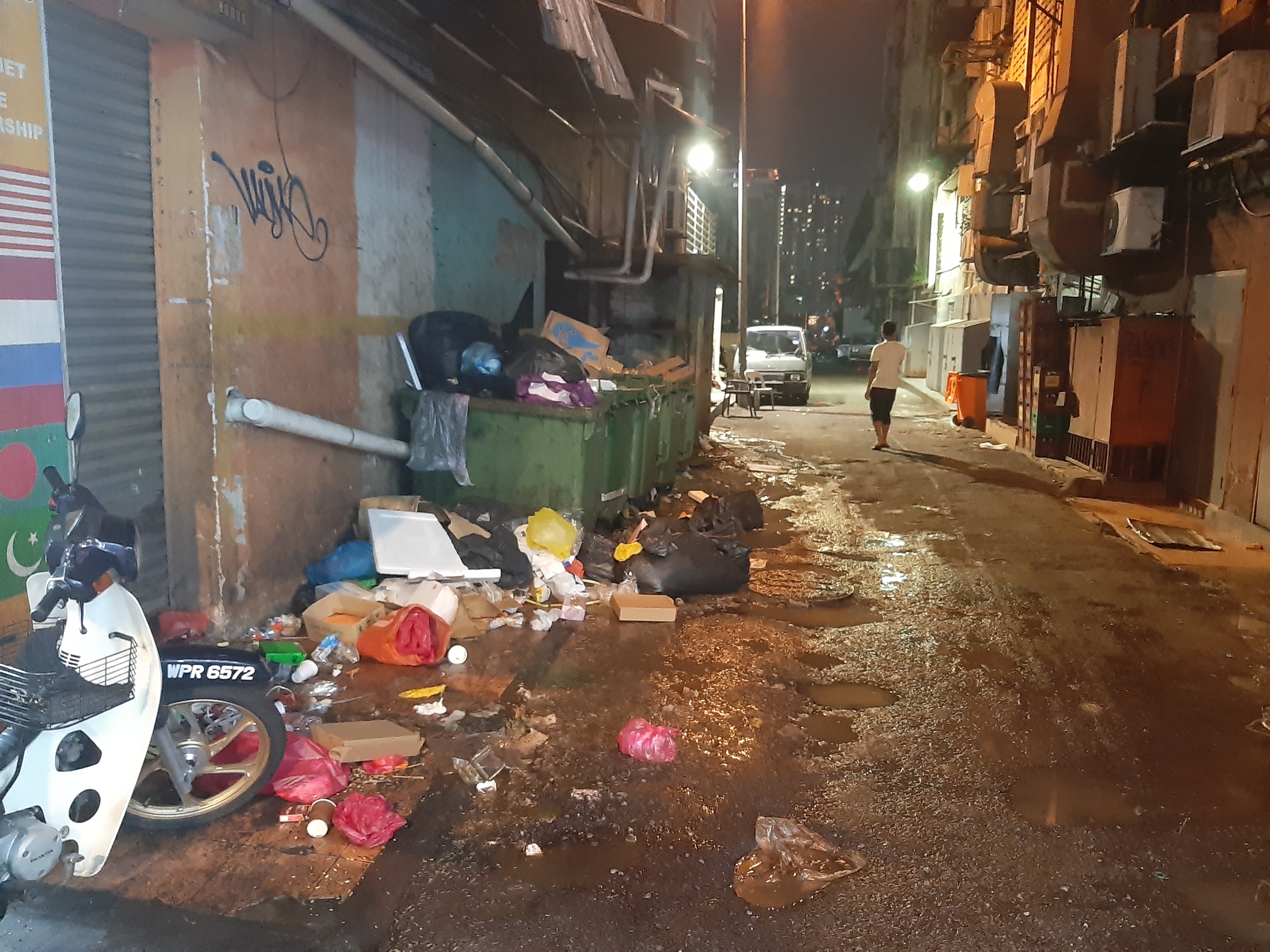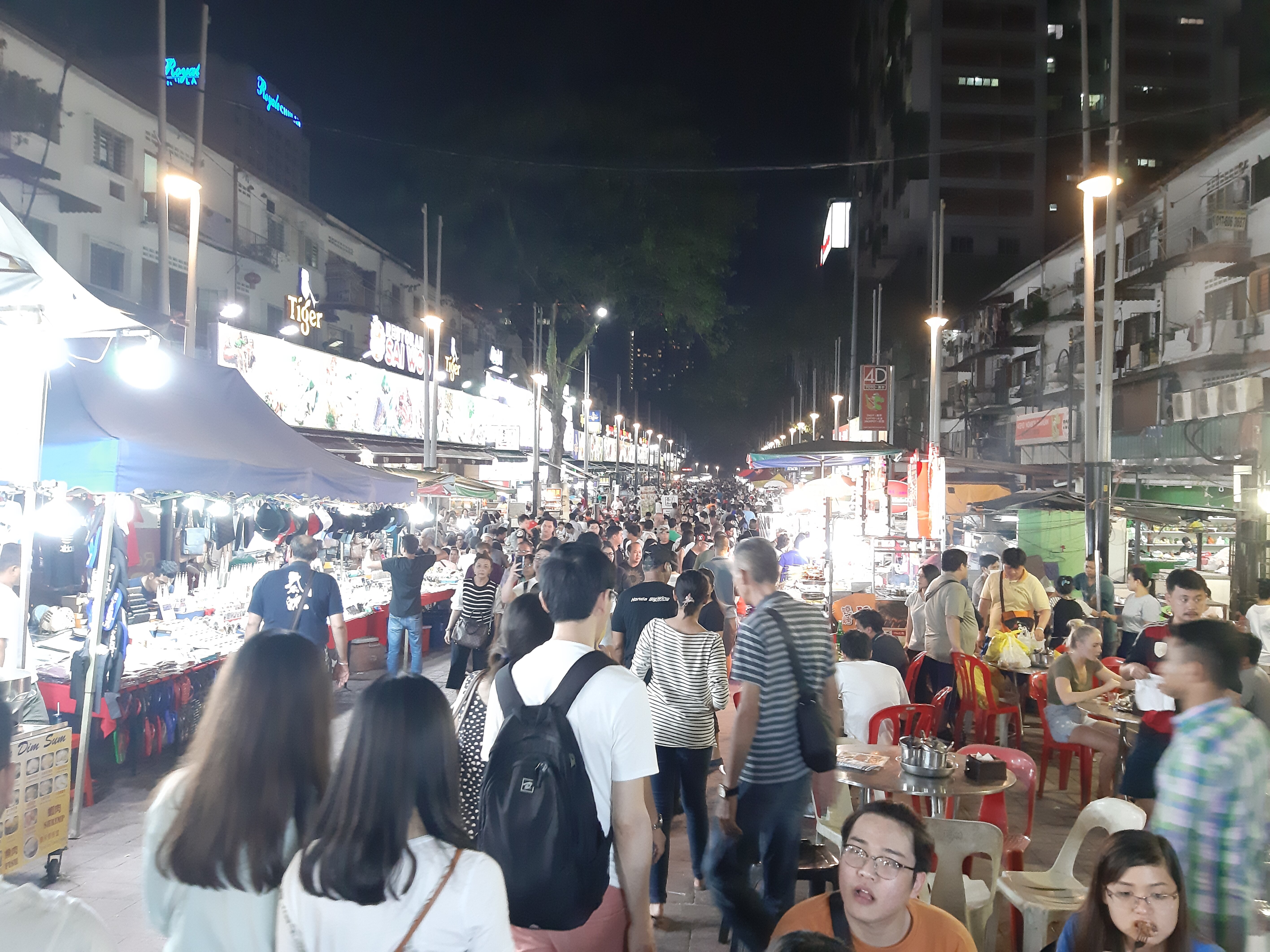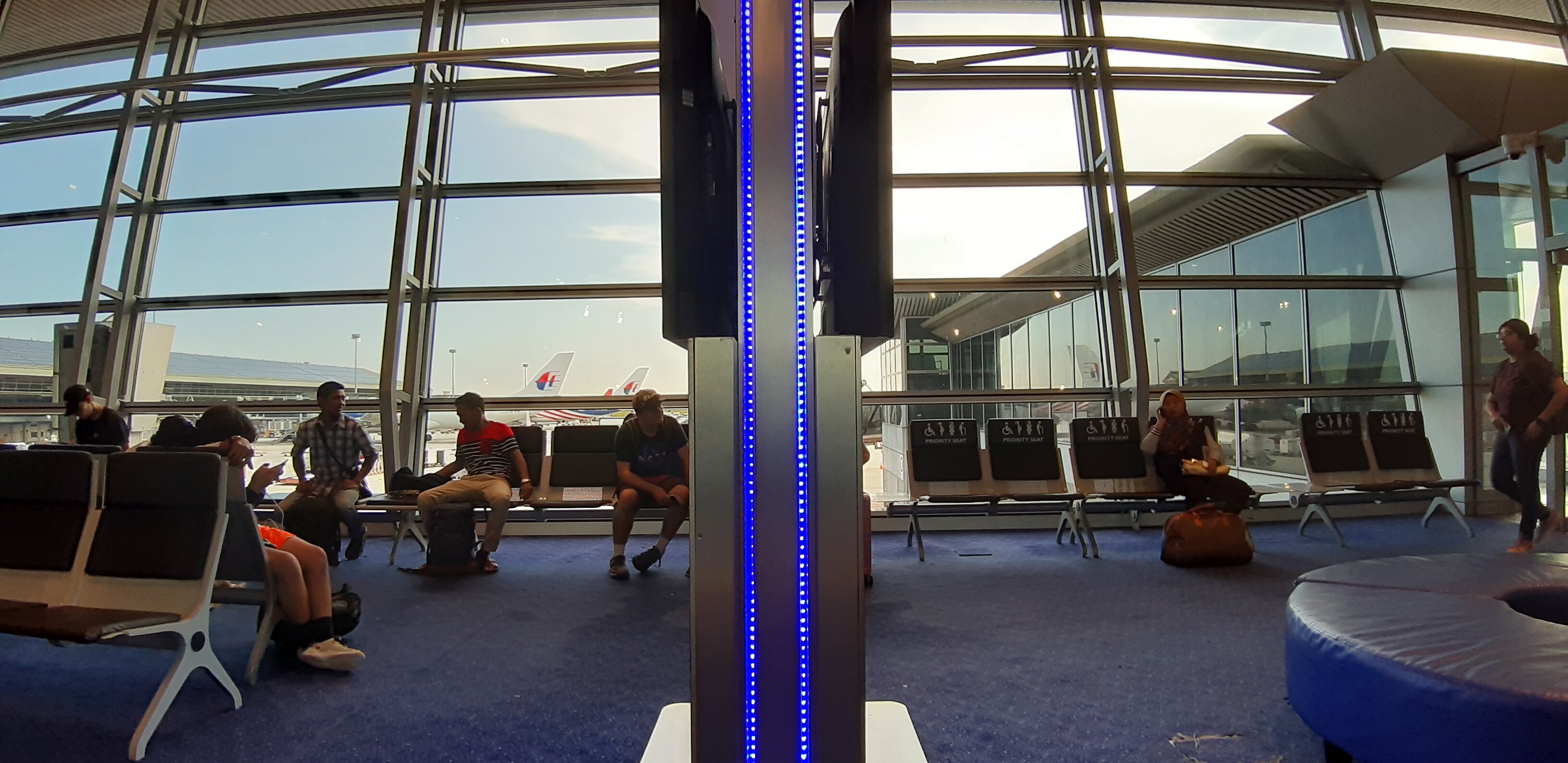Kuala Lumpur: Kinda Lousy?
I didn't particularly enjoy my stay in Kuala Lumpur the first time around. So why did I go back there, and what do I think now?
By mid-February 2019, after a month of staying in Kuala Lumpur, I had gotten tired and frustrated with the city and decided to leave. Actually, I decided that I had seen enough of the city after I had been in KL for just two weeks; I only stayed a whole month because I had already paid for my apartment for a month. My experiences here - which I will describe in this article - left me feeling that Kuala Lumpur was a lousy city and that it wasn’t a place that I would want to live. I thought I probably wouldn’t come back. You may be surprised to learn that just two months later in late April, I came back to Kuala Lumpur and stayed for a month. Here are the negatives and positives about Kuala Lumpur, why disliking somewhere isn’t necessarily a bad thing, and a few tips for how someone similar to me could better enjoy their stay.
I wrote the bulk of this post in February, before I originally left Kuala Lumpur, but I never published it. I’m publishing this after leaving KL for the second time, so I’ll be taking the opportunity to add my revised opinions here too, as I learned some more about the city. I’m going to be utilising strikethroughs to represent an information or an opinion I originally wrote that is wrong or that I no longer agree with, and underlines to represent information or new opinions that I have added.
In January/February, I spent approximately a month (34 days) in Kuala Lumpur, mostly living in the Bukit Bintang area with a few single-night stays in a couple of other locations. In April/May, I exclusively (well, except for my first night) stayed at The Bed KLCC - a location I stayed at during my first visit and had liked a lot. I hated Kuala Lumpur when I left the city in February, but my feelings have mellowed considerably since then. I’m not even sure that I did hate the city, more that there was a lot to dislike surrounded by a lot of extenuating circumstances. For one, I think I was in a negative mental space (as I had been struggling to do much more than write blog posts for the previous two months), and second, I was coming to Kuala Lumpur after having a great first time in Chiang Mai. That definitely didn’t help Kuala Lumpur, as Chiang Mai sets a very high bar and is still one of my favourite places in the world.
Still, there were lots of frustrating aspects about the city that were unpleasant for me to deal with at times. But there were also some aspects I liked, even if they were merely side effects of some of the unpleasantness. I found more to like (and also a little more to dislike) on my second trip.
Hostile Road Crossings
One of my biggest frustrations about Kuala Lumpur is the traffic and road system - a combination of bad drivers, worse motorcyclists, and inane jaywalking laws can make it downright unpleasant to cross the roads. Traffic lights take an age to change and it’s illegal to cross on a clear road without a zebra crossing. For your information, unlike some other places in Asia (having experienced Thailand and Bali), traffic in Kuala Lumpur is mostly composed of cars with a sprinkling of motorcycles (rather than motorcycle-centric).
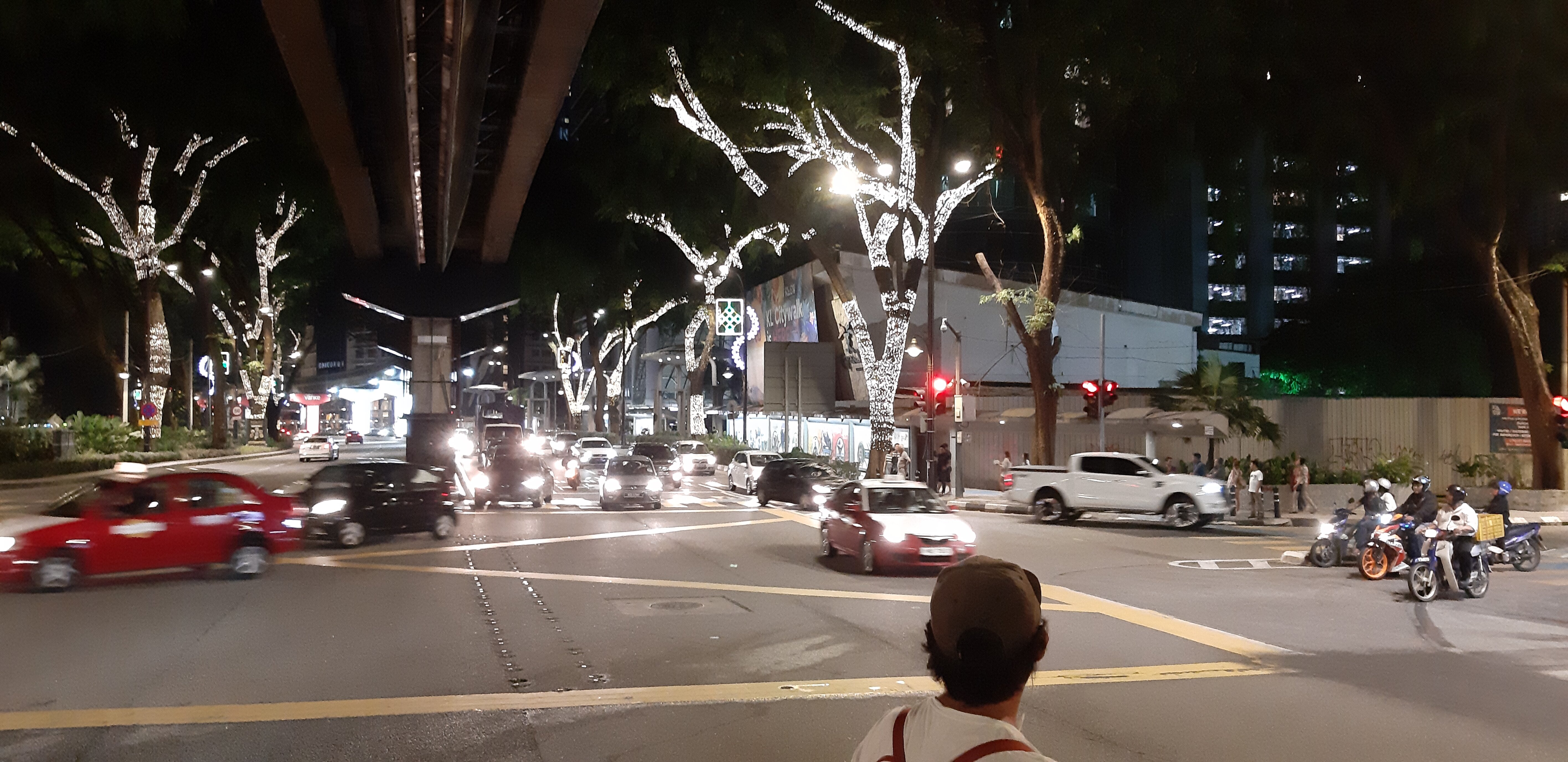 A busy (8 lane!) intersection, near KLCC.
A busy (8 lane!) intersection, near KLCC.
I looked up the rules of the road before I visited and followed them - or tried my best anyway (I don’t want a fine!). The annoying thing is that it feels like the local drivers don’t follow the rules of the road at all; this makes the deck feels stacked against the pedestrians because rules which are put in place to help pedestrians aren’t followed. A pedestrian is the person most at risk when a driver does not follow the rules, so you feel really quite powerless here.
Legally, pedestrians have the right of way when traversing a zebra crossing or other designated spot. This sounds really nice, and in theory it’s a great law. The problem is that you can’t take advantage of it because the drivers simply don’t care; they don’t slow down at all, even if you begin to cross when they are some distance away. Even if the cars have stopped so you can cross easily, you still need to be alert because a motorcycle could come speeding along out of nowhere.
Then there is the jaywalking law in Malaysia. Growing up in a country that doesn’t have one, I don’t like jaywalking laws because you have to navigate like a machine even if the current status of road would allow safe passage. It’s frustrating to be walking alongside an empty road whilst you make your way to the crossing, only for it to become an impassable stream of traffic by the time you get there. Unable to cross at the crossing, not allowed to cross elsewhere. Bummer.
Having been in Thailand just last month in the two months before I first came to Kuala Lumpur, you might think I would become adjusted to people driving in dangerous, unsafe, and bizarre ways. I was able to adapt quite well to Thailand - I had trouble at first, but by the time I left I could cross any road I wanted to. In Thailand, the fact that I knew that I couldn’t trust any of the moving drivers was helpful, as I would simply wait until either I was sure there was enough time to run from one side to the other, or on slower roads to just start walking and allow the traffic to flow around you. If the traffic doesn’t stop or adjust course, time to run! I had no problems after I understood how things worked. Not the safest roads or techniques, but it’s what you have to do there.
I think I actually found Kuala Lumpur to be more dangerous for a pedestrian than Thailand. I certainly saw more pedestrians in precarious situations in Kuala Lumpur than I did in Thailand. Most drivers in Kuala Lumpur obey the rules, which makes it even more dangerous when the other 10% act like they are mentally deficient in some way. Here’s are some examples:
The traffic lights seem to be timed such that if all the cars stop when the red light is showing, there would be a near constant flow of traffic; there isn’t the few second pause for the junction to clear that you might be used to in the west. If drivers obeyed the lights, the traffic flow would be beautiful. The reality is that a few drivers run the light and keep driving even after the light has gone red. This causes the whole junction to jam up because they find themselves face to face with the next set of moving drivers. Then everyone goes crazy and starts doing unpredictable things, which can include driving on the pavement or driving in the wrong direction, which is dangerous to pedestrians.
Or as a specific example, I saw someone skip the red light, only to come to a stop right in the middle of the junction. The green man lights came on, so pedestrians started crossing the road on all four sides. The driver then proceeded to reverse into a crossing pedestrian (!), who had to do a diving-roll out of the way when she saw the reversing car. What the —-?
Those 10% of acts-like-they-are-mentally-deficient dangerous drivers are so frustrating and scary. It makes it so that you can’t trust any rules that they are meant to follow, indications of what they might do, or systems that are intended to control traffic. Cars and motorbikes can appear from anywhere at any time. Trust nothing. I frequently witnessed drivers with their indicators on whilst driving straight, cars making illegal u-turns, drivers not stopping when the light is red, driving the wrong way down clearly marked one way roads, and, once, even driving on the wrong side of the road (quickly corrected when the oncoming traffic approached).
Another thing I’ve seen these insane drivers do is slowly and aggressively drive towards crowds of pedestrians at the zebra crossing to get them to move out of the way. On some occasions, I’ve seen the cars literally push the pedestrians that can’t get out of the way. It happened to me too once; I was on the outside of the group and couldn’t really manoeuvre past them or get out of the way, and the driver hit my leg with his car painfully, not stopping the whole time. The driver obviously saw us (we were a crowd directly in front of him!), he just didn’t care. It was entirely his fault, we had the right of way…
I’m not kidding when I said that the drivers act like they act mentally deficient! Perhaps even sociopathic!
Another thing I find baffling is that in some junctions in KL, there’s isn’t really such a thing as the amber (yellow) traffic light. There’s one built into the light fixture, but they don’t seem to use it - it always just goes directly from red to green, or green to red. I’m used keeping an eye on the light as I cross and using the change from just red to red & amber as an indicator that I need to hurry up (or to not try crossing) when in front of stationary traffic. But it just goes from red to green here. On a few occasions in KL, I have been crossing the light unexpectedly turned to green. Each time, the cars started moving, ignoring the fact that I was still in the middle of the road (and completely visible to them)!
In KL, I have no indication that the lights are going to change, and it puts me in a dangerous position. I realise this isn’t so much a problem with the traffic lights, but a problem with drivers not respecting the right of way of pedestrians. I should probably learn from this and not try to cross the road like that. On my second visit to KL, I decided to just follow the lights mechanically, which is safer but much more frustrating. It has it's own problems - like having to stand in the sun for much longer - but it's better to be safe.
Another huge frustration of mine is the food delivery porters (eg Grab Eats, Food Panda, etc). They drive have tight schedules, drive around on motorbikes, and have no qualms with breaking all the rules. They ride all over the pavement, drive across intersections when it’s the pedestrian’s turn to go, and generally just do unpredictable, dangerous stuff. In one instance, one driver was speeding along past stationary cars, ran a red light, and almost hit me whilst I was crossing the road at the traffic lights (with the green man!). I only saw a handful of people riding motorbikes on the pavement during my two months in Thailand (The same was mostly true for my two months in Bali), in Kuala Lumpur it is commonplace - you see it several times a day. If a food delivery biker has a stretch of pavement that they can use to cut 15s off their route, they’ll absolutely take it, pedestrians be damned. They don’t even slow down - they expect you to just move out of their way, sucks to be you if you don’t. It’s bad enough for pedestrians without motorcyclists breaking rules and driving on the pavements. It’s dangerous and honestly it pisses me off. I like to listen to my music whilst I walk but the food delivery porters mean that it’s too dangerous.
Oh, and this kind of thing is frequent:
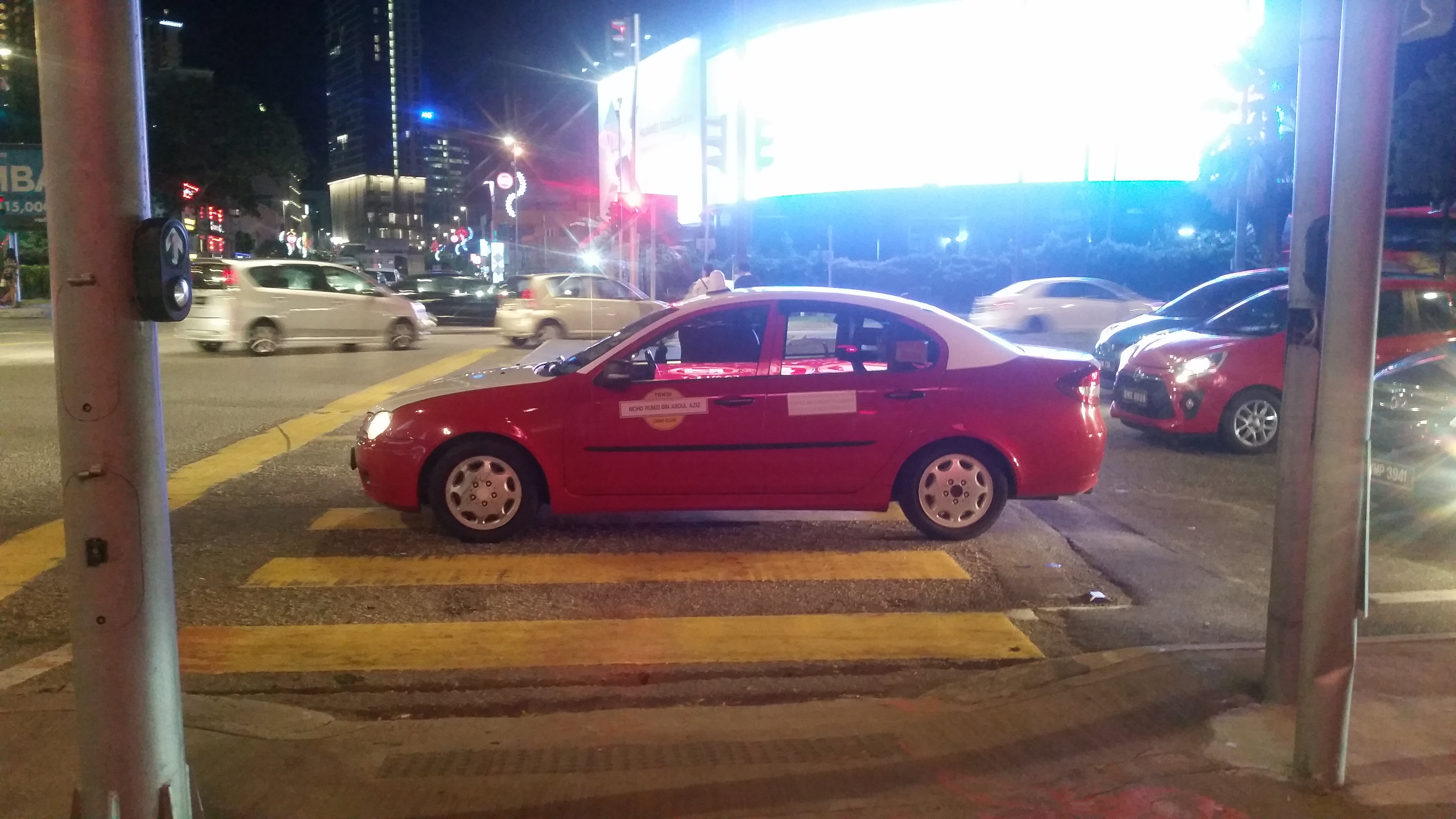 A driver parks on the pedestrian crossing.
A driver parks on the pedestrian crossing.
Street Harassment
If just trying to cross the road wasn’t bad enough, getting around on the pavement in the city center has it’s own set of issues. The apartment I stayed in during January was fairly close to the city center - it took me just 35 minutes to walk to the famous KLCC area and the KLCC Suria Mall. Malls like Pavilion and Berjaya Times Square were closer. When I want to eat, it made sense for me to go to one of the Malls; they all have food courts, and I find food courts to be cheap and convenient. Incidentally, on on my second visit, I stayed near KLCC, so Suria was close, Pavilion was slightly further, and Berjaya was furthest. So everything I write about Pavilion or KLCC Suria below applied instead to Berjaya Times Square, and vice versa.
Going to Berjaya Times Square was painless because it was right next to my apartment. But there’s a fairly busy intersection outside Pavilion. When travelling from my apartment, you have to pass through it to get to either KLCC Suria or Pavilion. This area is a purgatory for somebody who mostly just wants to be left alone and do their own thing. You have to make your way through a gauntlet of people who all want your money. You’ll be accosted by hawkers trying to sell roses or souvenirs, women trying to get you to go into a massage parlour, men trying to offer you a ride in their teksi cab, people in shops shaking “50% off” signs at you whilst shouting indistinguishable nonsense, men from restaurants holding menus stepping in to your path and touching your shoulder, etc. Leave me alone! There’s also a lot of beggars who do similar stuff, but I’ll talk about that in the next section.
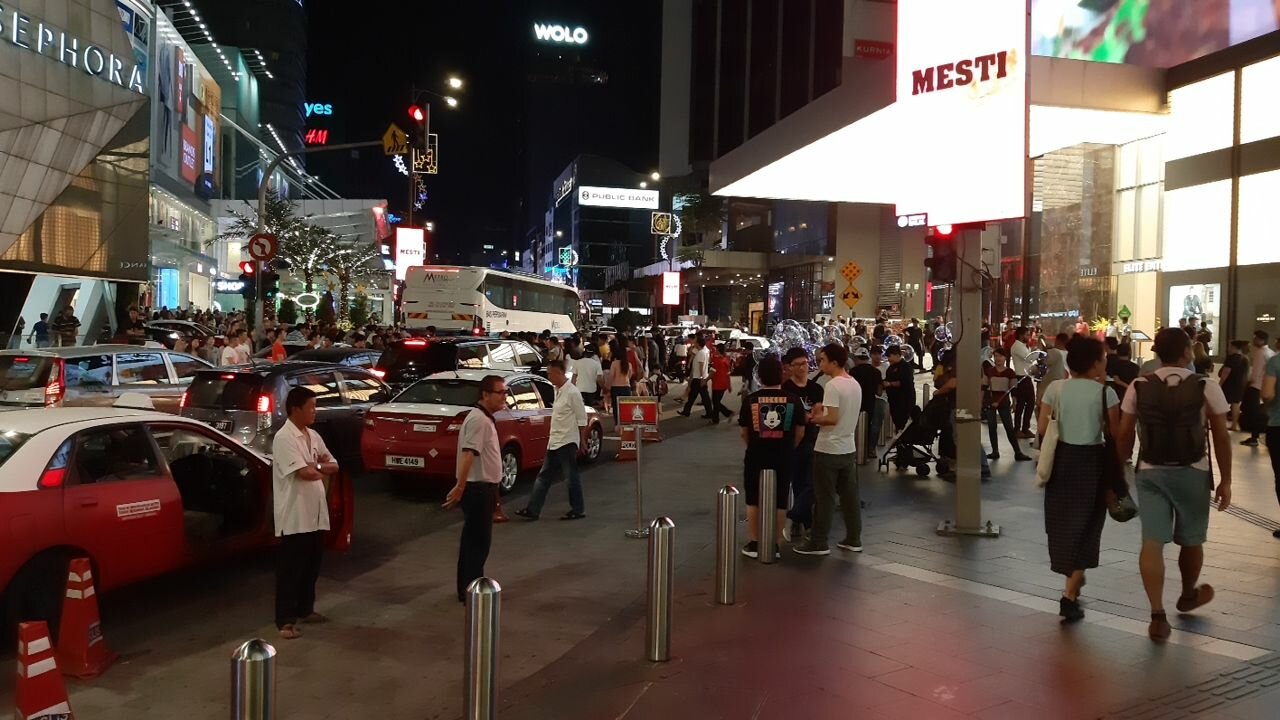 Looking from Pavilion towards the offending area.
Looking from Pavilion towards the offending area.
On the route that goes from the intersection to Pavilion, the crowds must squeeze to get through some fairly narrow paths. Kiosks sit to one side whilst a building stands on the other. People are just trying to get from place to place, but when someone is stopped by one of those hawkers, it causes a minor blockage in the path and everyone is waiting needlessly for a few moments before the flow corrects and people get moving again. Or perhaps it just causes a major blockage and all movement ends for a few moments. These blockages add up over time and it just leads to a sluggish journey, and it often made me want to walk on the road and avoid the pavement. The kiosks don’t help as they often have queues which spill into the walkway. Many times we saw queues blocking the path because of a particularly popular kiosk that liked to make an entertaining performance of serving ice cream.
By the time I got to Pavilion, I’d generally be annoyed and frustrated. It didn’t bother me so much at first, but I went to Pavilion or KLCC Suria pretty much every day and it got to me. Honestly, I’d actually say I got ‘triggered’ by it, as much people generally use the word ironically. It’s a small thing to get annoyed by, but it happens every day and it wears you down after a while to the point that I would get irrationally annoyed and frustrated.
Our friend Jurn had similar feelings about the area:
 Jurn’s initial feelings about Kuala Lumpur after being here for two days.
Jurn’s initial feelings about Kuala Lumpur after being here for two days.
In my second stay, I stayed near the Petronas Towers in the KLCC area. I found that I had no frustrations getting to Pavilion or KLCC Suria. In fact, I realised that there is almost a 'circle' that defines the 'bad area' where those things I didn't like occurred. The circle *might* be bigger or smaller than this - and it might not even be a circle - but it's definitely there. I found that if I didn't go near this circle, I actually could enjoy my time wandering around. Jurn was unfortunate, because his apartment was right next to it (or possibly inside it?). There's also a small line of restaurants/bars outside KLCC Suria where you get harassed too, but you can avoid it by crossing the road as they're all on one side. But [do you really want to cross a road in KL?](#hostile-road-crossings)
In a similar vein to that discussed here, some of the restaurants do particularly aggressive techniques to try to get you to go inside, which actually seriously backfires for them when dealing with somebody like me. I’d often look towards a restaurant that I was interested in eating at (or just checking the menu for), but the person from the restaurant metaphorically pounced on my gaze and started moving towards me and gesturing for me to come inside. I don’t want that! It’s a red flag and makes me want to go somewhere else! If they have this poor behaviour as their ambassador outside, what is it like inside?
The Beggars Problem
Kuala Lumpur has a big begging problem. I saw more homeless/begging people here than anywhere else I’ve ever been. I’d say that every time I try to walk anywhere in the city center here, I see beggars every 100m or less, with hotspots around the entrances to the malls.
 The entrances/exits of these pedestrian bridges always have beggars.
The entrances/exits of these pedestrian bridges always have beggars.
I have a suspicion that most/many of them are so-called ‘professional beggars’ - they choose to beg rather than take a job because they make more money this way. Most are locals and I saw many of the same people in January/February that I saw in April/May. You can sometimes catch them doing things that doesn’t really fit with the “I’m poor and have no money” narrative, like miraculously eating an XL pizza or fiddling on a smartphone or something. Some don’t look to be doing too bad for themselves. They also vanish when it’s raining, whereas the vendors often just move into cover. I might be wrong but this was my impression.
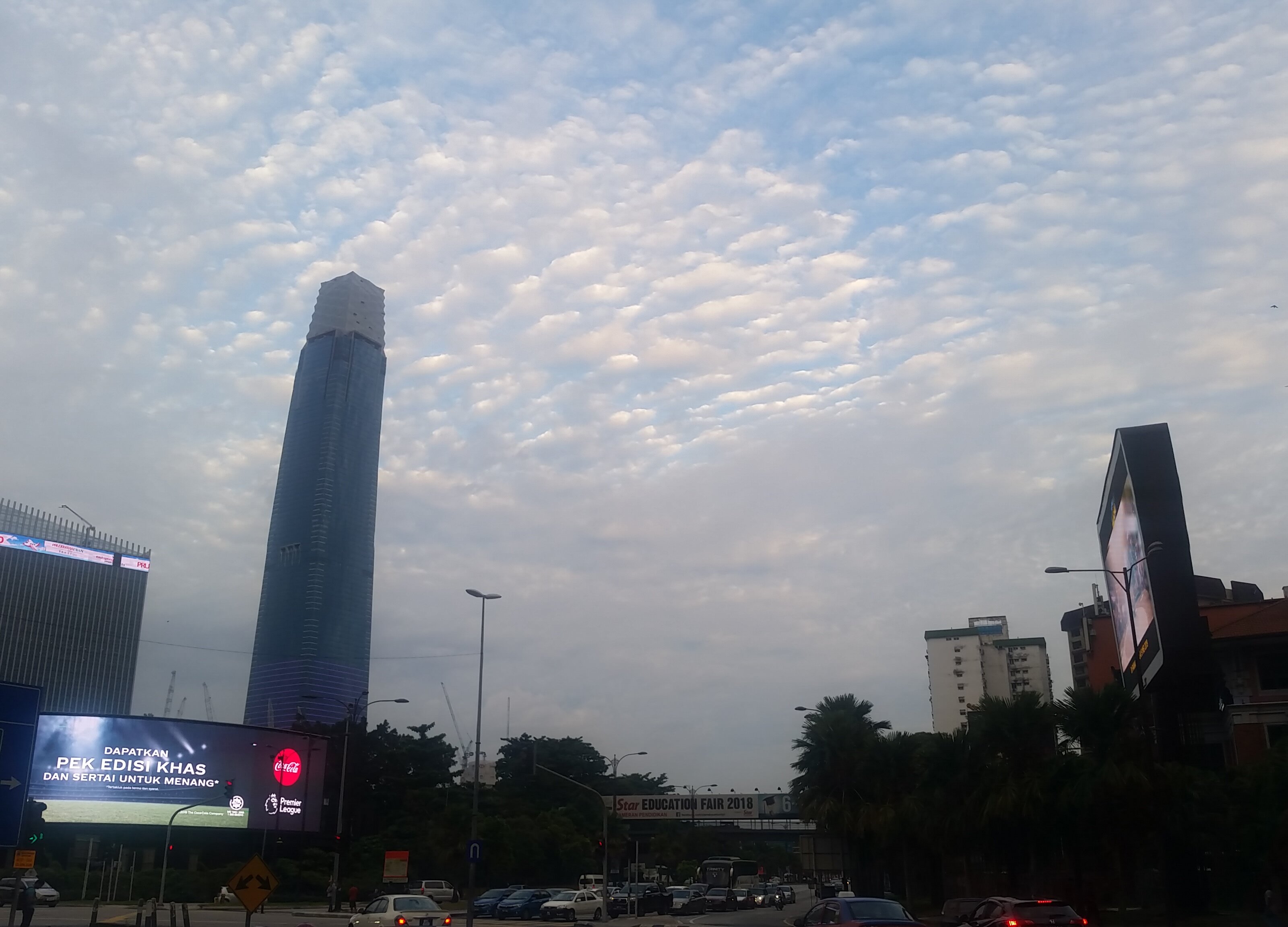 A mostly-unrelated picture; the spot I took this is crawling with beggars, though.
A mostly-unrelated picture; the spot I took this is crawling with beggars, though.
The idea that the majority are professional beggars feels almost confirmed to me when I read about people begging for money for their child’s surgery, despite the funds already being acquired in full. Jurn reckons he actually saw the same family still begging, but I suspect it was a different one given that the kid was scheduled for surgery 17 months ago. Within a week of being in KL on my second visit, I saw the same family begging, and now I'm not so sure that it isn't the same kid. I honestly wouldn’t be surprised if some immoral parent refused surgery for their child and kept the money, and continued begging, using the kid as a ‘prop’ to be able to beg for more money. Some people are horrible and the people in that news story clearly have a broken moral compass - after reading that, I can believe they would do anything for money, including keeping their child ill just to be able to continue begging.
 Sick child with hydrocephalus, begging mother.
Sick child with hydrocephalus, begging mother.
I actually saw a different child with hydrocephalus (big head) during my time in Kuala Lumpur, which makes me wonder if families with illnesses move to KL just to beg.
Many of the beggars in Kuala Lumpur have some kind of ‘prop’ with them. This can be an actual physical object like a Qu’ran that they read and chant from, or a card that says they are mute/deaf/blind (often carried by young girls who suddenly appear at your table in the food court). I think they do this to get more money - it either boosts your sympathy or appeals to some other part of your character - like religion.
The worst is when the women use young children as a prop. I saw a little kid that would always pretend to cry when a foreigner was passing by, only to stop moments later when they had gone past. Or a woman I repeatedly saw who would continually change a baby’s nappy. Every few minutes she would change the nappy again, cycling between the same two nappies (I was watching from a cafe). It’s impossible to trust any of the stories when ‘everybody has a story’ and some of them are visibly fake. I am reminded of the scene in Slum Dog Millionaire where a man blinds a kid so that he will earn more money when begging (Bad quality video of the scene here). Obviously it’s not that extreme here in Kuala Lumpur but it’s still a big problem and I feel pity for the kids who are being brought up into that life.
 The underside of these monorail train stations tend to have a lot of beggars.
The underside of these monorail train stations tend to have a lot of beggars.
A few spots are particularly troublesome for begging. There’s one area which I honestly try to avoid. It’s on the corner of a crossroads, and there will often be a band/buskers playing there (with speakers). It attracts all kinds of onlookers, which in turn attracts all kinds of people looking beg for money and to sell tat. I never want to hang around there for fear of pickpocketing - it feels like the perfect spot for it and I can’t feel safe there. It was part of the route that Jurn had to take to get to Pavilion. Is it any wonder he didn’t like KL?
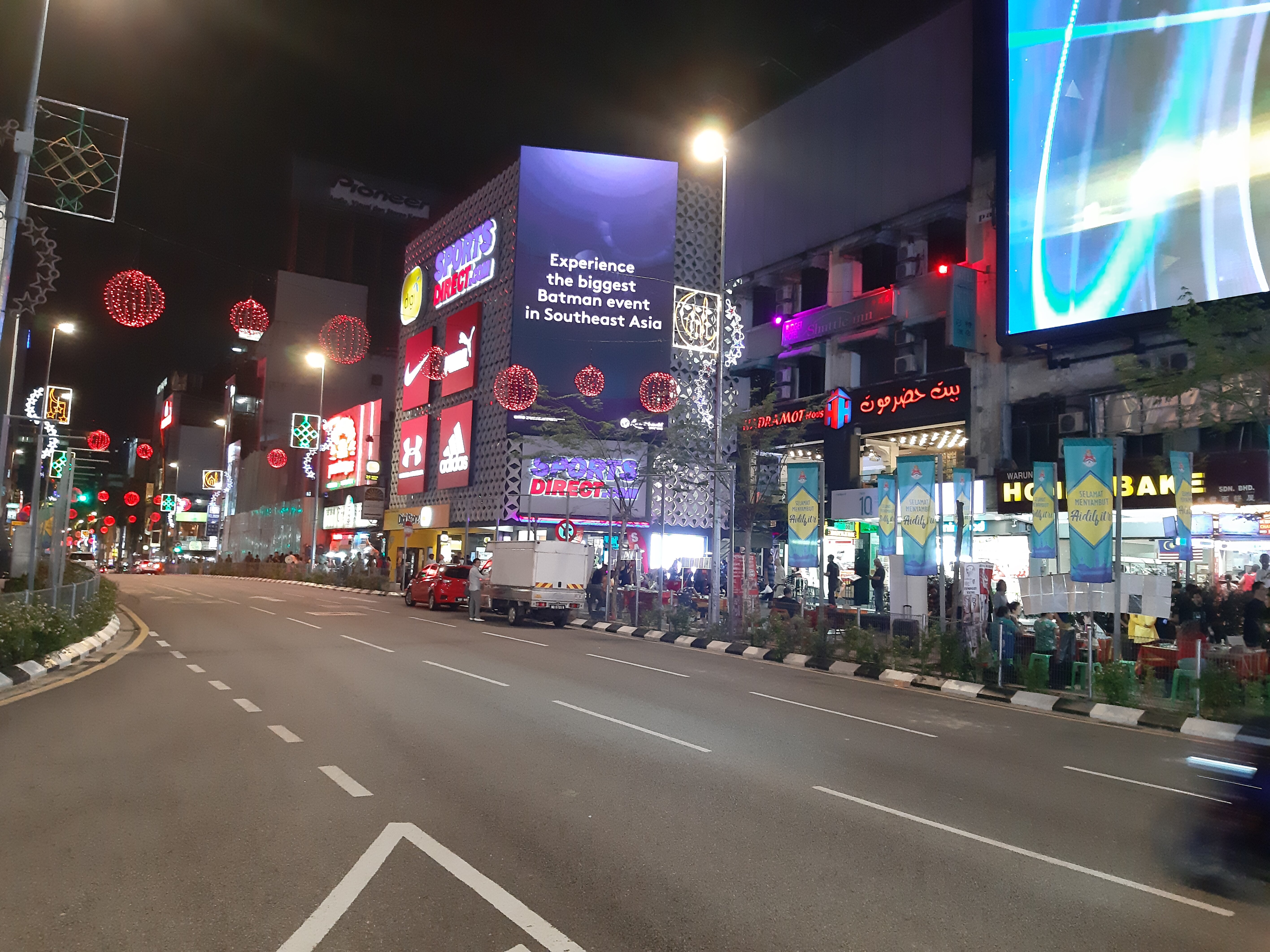 Looking towards the area that I try to avoid. There are lots of makeshift stalls here interspersed with beggars. Shady-looking characters hang around here too.
Looking towards the area that I try to avoid. There are lots of makeshift stalls here interspersed with beggars. Shady-looking characters hang around here too.
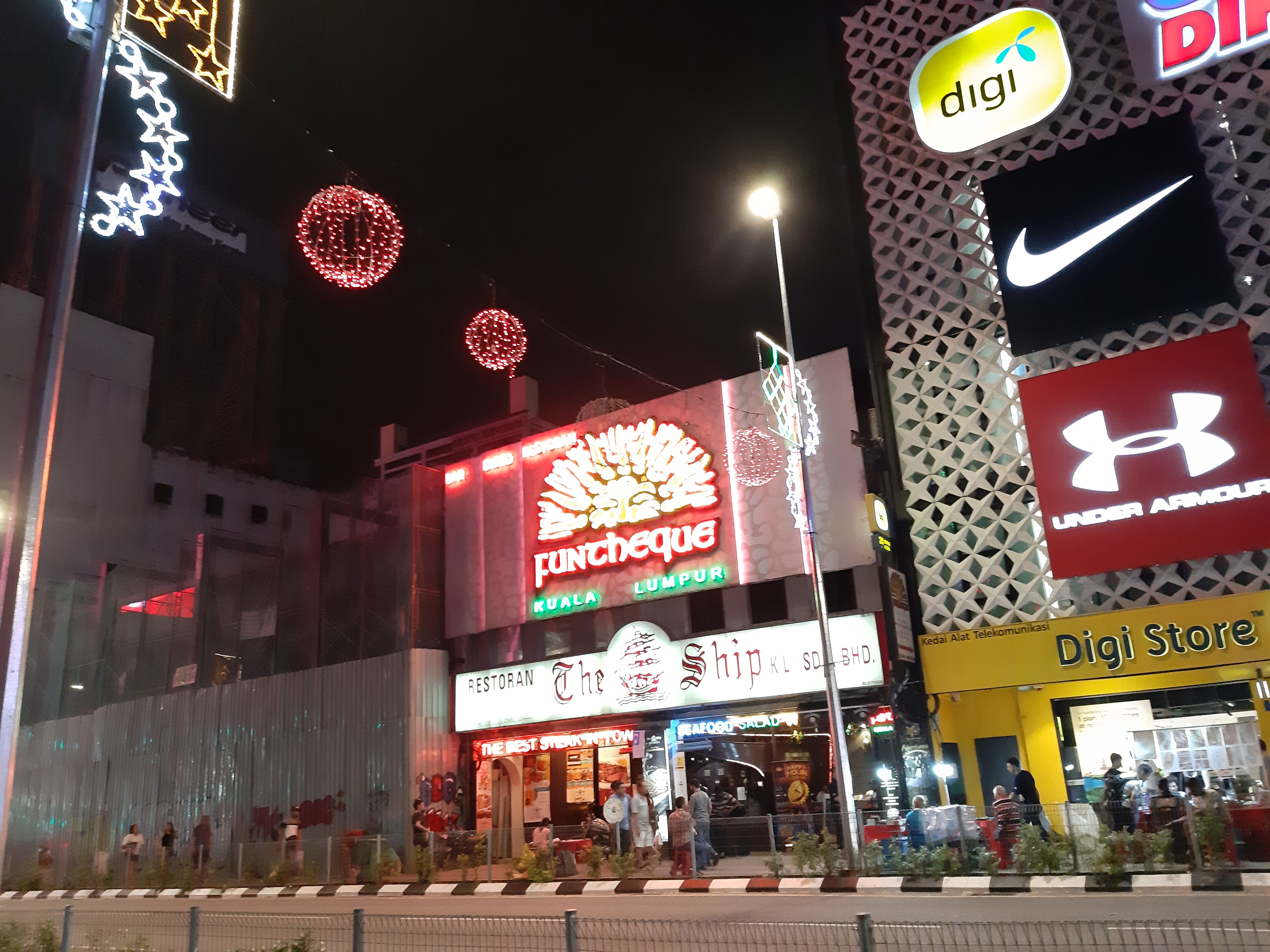 Looking towards the area that I try to avoid. The left side is always lined with beggars.
Looking towards the area that I try to avoid. The left side is always lined with beggars.
On our second night in our apartment in January, Daniel and I passed through that same area and saw a pair of broke Russian backpackers sitting and trying to sell people postcards. They had a sign which said something like “We are travellers from Saint Petersburg, Russia. Every sale keeps us moving!”. We heard later that they were arrested for swinging a baby around in the air. I also read a story about a German guy who comes to Kuala Lumpur to be a beggar too. It’s incredibly embarrassing as western people are meant to be from ‘developed’ society with ‘safety nets’, yet these people came here to ask for money from people who have comparatively little.
Landmarks and Tourism
By all indications, there isn’t much to see in Kuala Lumpur. One company claims that one 24hr city-tour-bus ticket is enough to see it all.
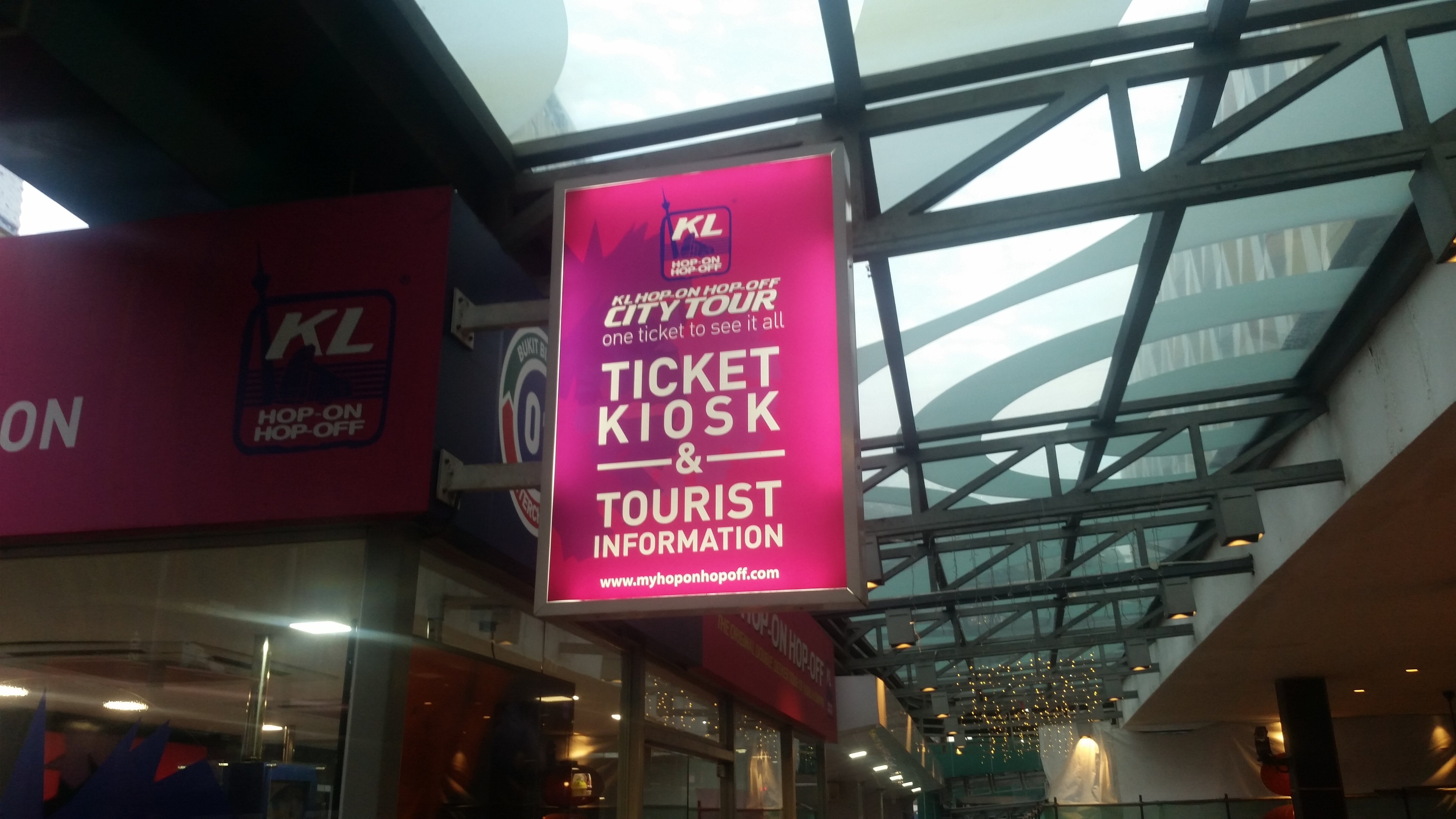 See everything there is to see in Kuala Lumpur with just one bus ticket!
See everything there is to see in Kuala Lumpur with just one bus ticket!
KLCC Park and the Petronas Towers are pretty unavoidable, as they and KLCC Suria (a mall I frequently eat in) are all in the same location, but I’d still consider them ‘sights’ that you might want to visit.
The KLCC Park is a nice place to sit and chill out for a while, but the areas near the mall get overcrowded, especially during the evenings. There is a show during the evenings where they turn on the water fountains and project lights through them. Sometimes they play music too. The water fountains are positioned in rows and are have the intensity changes so that they perform simple patterns like sine, square, and triangle waves, as well as some that I’d struggle to describe, but would name “Echo” and “Pong”.
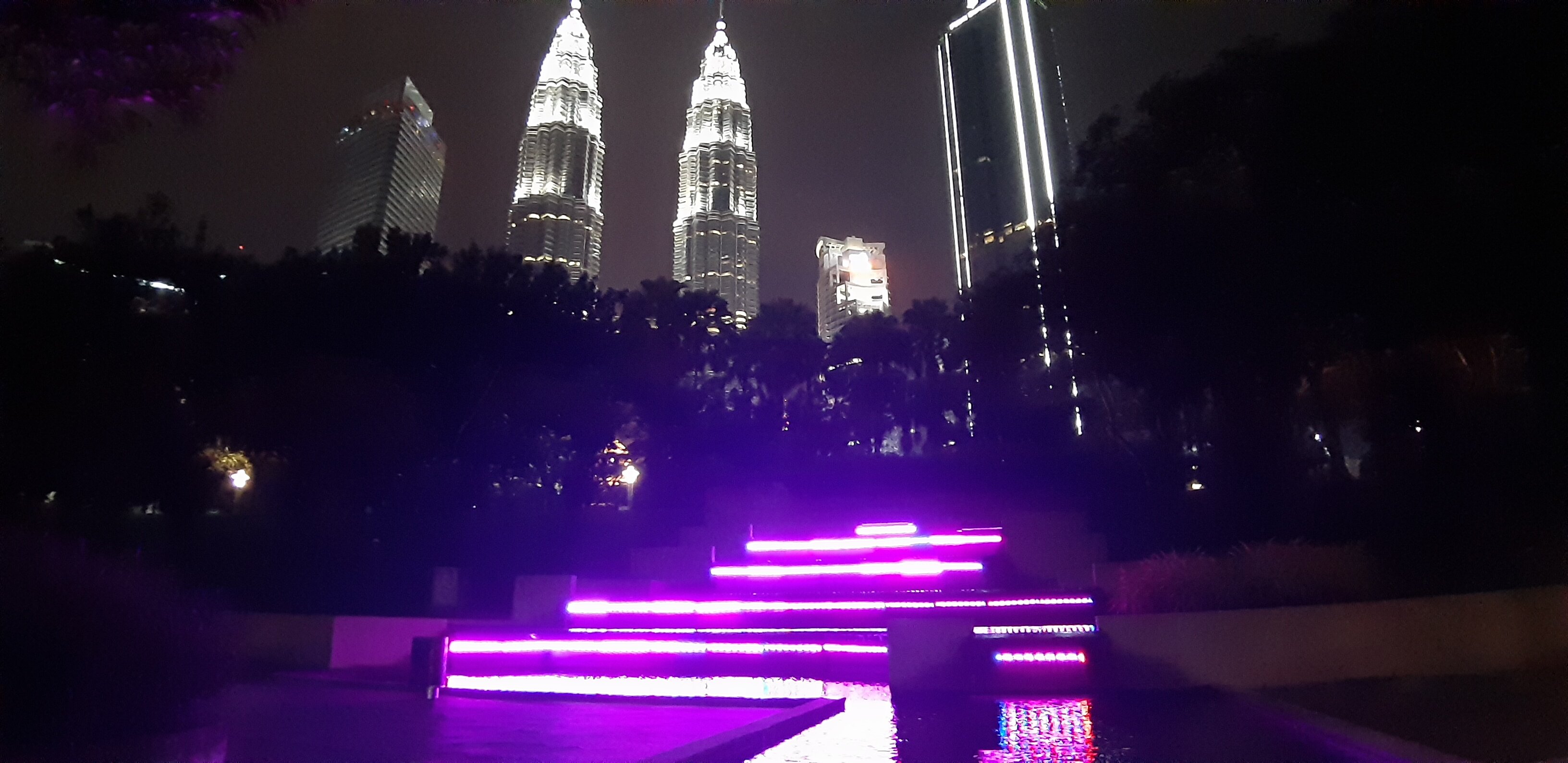 Petronas Towers from a section of KLCC park by the Kuala Lumpur Convention Center.
Petronas Towers from a section of KLCC park by the Kuala Lumpur Convention Center.
The Petronas Towers are cool because they are so tall, but I found that you can’t really appreciate that because perspective makes it so that they don’t really dwarf the nearby buildings - some of the nearby buildings actually feel taller or bigger to me because of forced perspective. They also taper off towards the top, which makes them look smaller than they are. It’s also hard to get to a good viewing position close to the base because KLCC Suria mall is in the way. I might appreciate them more if I went up to the viewing platform, but I went up the KL Tower instead, which didn’t exactly make the Petronas Towers look big but revealed that yes, they are taller than the nearby buildings.
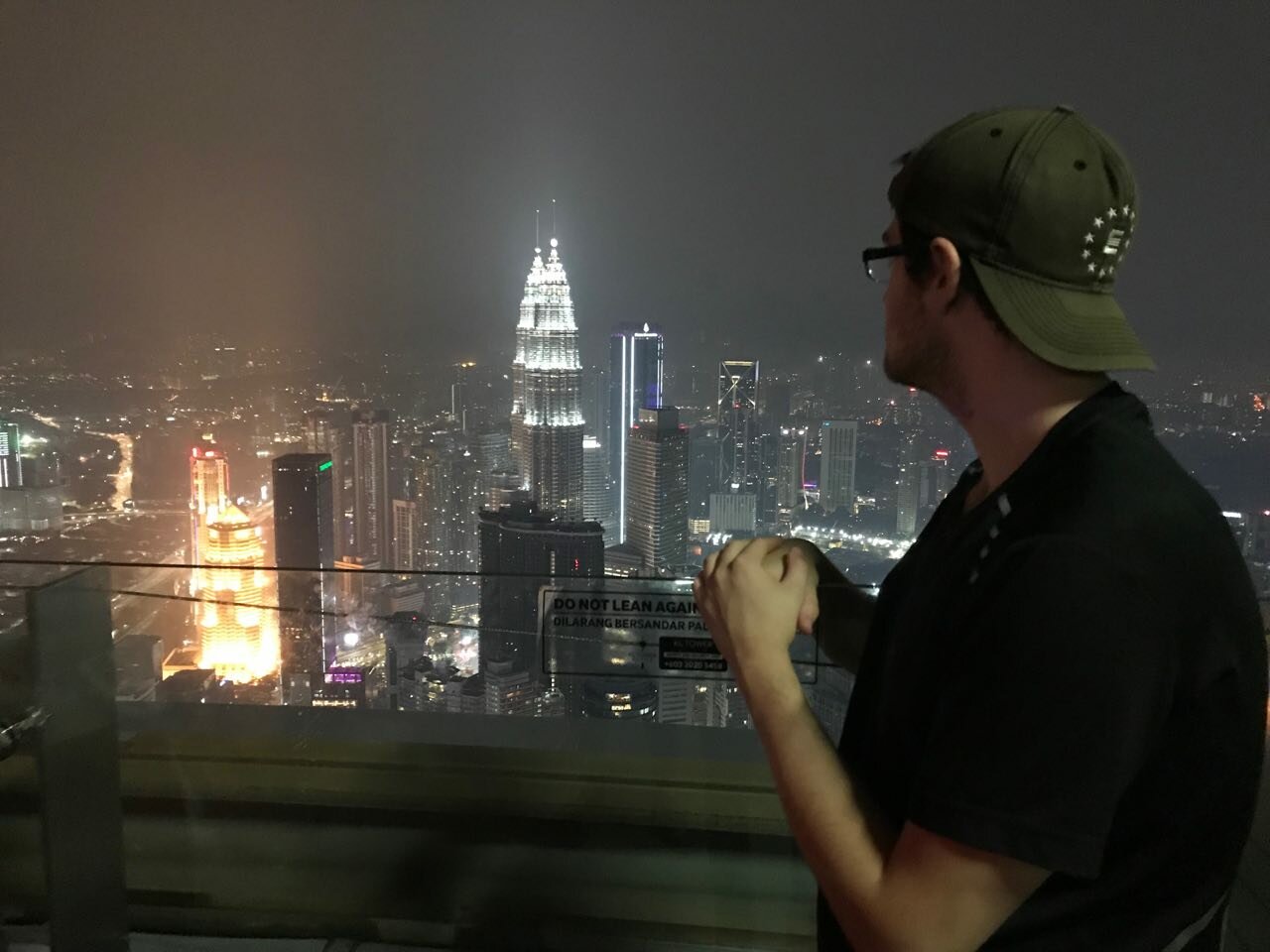 Looking at the Petronas Towers and nearby buildings from the top of KL Tower. The building to the right of the Petronas Towers looks bigger from the park.
Looking at the Petronas Towers and nearby buildings from the top of KL Tower. The building to the right of the Petronas Towers looks bigger from the park.
I would very recommend taking a trip to the top of KL Tower if you go to Kuala Lumpur. I think that the view from the top is spectacular. It was cool to see all these sights that I saw from the ground from above.
For other landmarks and tourism, you have to travel to them, though that’s fairly easy as Kuala Lumpur previously held Grab’s headquarters and is supposedly one of the best place in the world for the company. As an example, we travelled 14km to the Batu Caves and back in a Grab for a 42 Ringgit round trip (approximately £7.89, $10.29, €9.07) which we were able to split between three people. The drivers responded to our request within seconds and picked us up within minutes.
I had wanted to visit the Perdana Botanical Gardens during my first proper day of Kuala Lumpur, but found that it was fairly inaccessible to pedestrians and ended up never visiting.
Honestly, I don’t hold the landmarks of Kuala Lumpur in very high regard. The Petronas Towers are just kinda ‘there’. KLCC park is nothing particularly special, and the show gets old fast - When Jurn arrived, the three of us went there in part to see the show, and left before it had even finished… The Batu Caves were nice to visit, but mostly just because it was cool to watch the antics of the monkeys - the site itself was a disappointment and would have been much nicer without the temples and construction work. The only exception for me was KL Tower, which was awesome.
Infrastructure
Public Transport is fairly good. There are trains/monorail/buses that go all around the city for fairly cheap. This isn’t good for short distances because the stops are far apart, but given that the city is massive, it’s still very useful. For short distances, Grab is more practical. (If you were wondering, neither are particularly practical from going from my apartment to get food. The stops for the train were slightly too far to be convenient, and the wait times and the queue to park (you aren’t allowed to get out of a Grab in the middle of a traffic queue) actually makes Grab take longer than walking.)
In my limited experience, the digital infrastructure was fairly bad in Kuala Lumpur. The WiFi in my building cut out several times (in fact, it was out for the 4 days before I checked out…), and there is a lack of open, public WiFi. Coffee shops are generally okay.
My SIM data provider (digi) often randomly slowed down to a crawl, and the deals weren’t particularly good either.
The one really nice thing about Kuala Lumpur is that they use British Plugs!!!!!!!! Probably the only thing you’ll see me being nationalistic about, but we by far have the best plugs in the world. I fully agree with Tom Scott here.
Cleanliness
No real criticism here, really. The city generally felt relatively clean to me. I did see the occasional (sometimes dead) rat or cockroach. But that’s common in Asia. I wasn’t expecting (nor wanting or asking for) pristine clean streets like you might see in Singapore or Japan.
Who am I kidding?
A lot of places are really dirty in Kuala Lumpur (the beggars/homeless don’t help matters here). Even some heavily walked paths smell of pee because of the homeless people who live and sleep there, and some alleys with dumpsters are atrocious. But some places are really clean too. Hotels are typically flawless, and often have beautiful, clean water features at the front.
Culture
Malaysia is a multi-ethnic, multi-lingual, multi-cultural country. The predominant religion is Islam (and hence you will hear the Call to Prayer, and see a lot of women in head scarves). They use UK-style plugs (Yes!) and English is everywhere.
The street that my apartment was in was some kind of mild Chinatown, there’s an Arabian area near Pavilion, and there’s an Indian I passed through when walking between KL Sentral and KLCC. There are mosques all around the city, and I saw a few Gurdwara and Mandir here and there too (I think). I didn’t see any churches in person, but I saw a neon cross symbol on the side of a building when I was at the top of KL Tower. So I think it’s definitely a pretty diverse place.
 Hindu temple in the Batu Caves.
Hindu temple in the Batu Caves.
My issue with such a diverse nation is that it’s hard to identify anything that is uniquely ‘Malaysian’. Or to put it another way, what can I see here that I couldn’t see (and possibly better?) elsewhere. Even their language has a lot in common with Indonesian. It feels like the whole of Asia has been crammed into just one small city. It can actually be quite weird - huge skyscrapers sit a short distance from ghetto-like buildings, random clumps of jungle, and traditional housing.
Perhaps this unique blend of the different cultures is what you should take away from Malaysia, rather than looking for anything ‘Intrinsically Malaysian’? Sitting in one of the food courts, you will see people passing through from every developed country, and I really like that.
Heat and Rain
I have heard that the temperatures, weather, and climate are fairly consistent year-round in Malaysia/Kuala Lumpur due to the proximity to the equator, so my experiences here should be fairly representative of the city. Apparently Kuala Lumpur is wettest from March to April (which I mostly wasn’t here for) so things might be more extreme during that time than what I experienced.
Kuala Lumpur feels hot - far hotter than Chiang Mai in November or Bali in March, and perhaps on-par with the heat I felt during my short visit to Bangkok in November. And I’m saying this after three six months of heat acclimation. I think that the sun is more intense here than Chiang Mai. I happily spent hours in the pool in Chiang Mai, and hiked up a mountain on new years day, but when the sun is out in Kuala Lumpur, it can be unpleasant to just walk to get food because the sun was bearing down on you. The sun generally isn't intense because of cloud cover, so sunburn isn't really a problem (when compared to Bali, where I'd get burned on any day that I didn't wear suncream). As I experienced in January/February, some days can be exceptions and the sun can feel unpleasant - but I never got burned here. During both of my stays in Kuala Lumpur, I had a consistent temperature of around 32C with slightly differing levels of humidity.
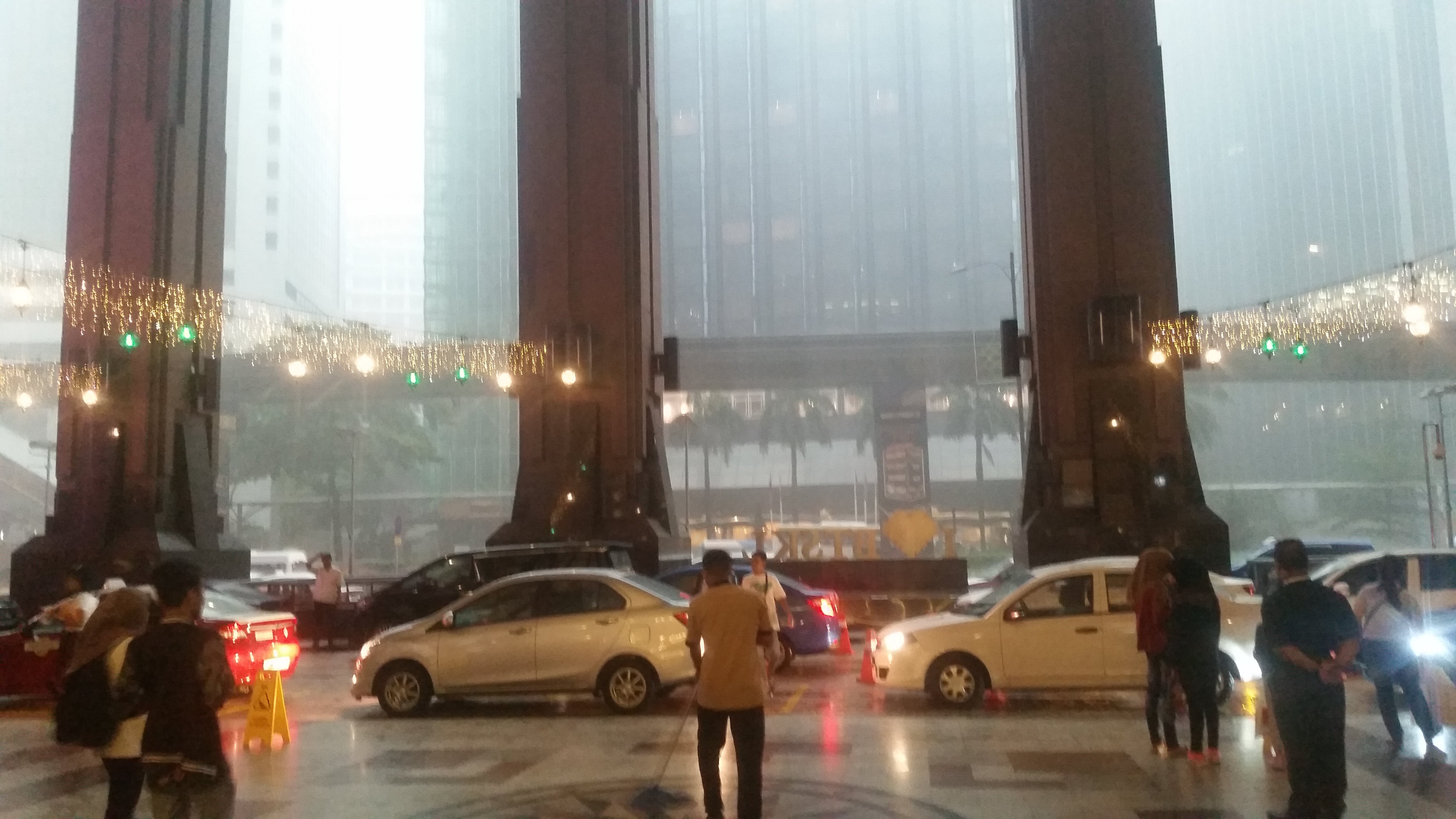 Heavy rain makes the skyscrapers disappear.
Heavy rain makes the skyscrapers disappear.
The rain was pretty brutal. Sometimes it would rain all day. Literally 8 hours straight of the kind of rain that makes you need a change of clothes after 2 minutes. It’s nice to go outside after the rain because everything cools down. I don’t mind the rain itself so much as there are covered walkways, sealed pedestrian bridges, or overhanging floors on buildings that you can shelter under as you travel. for many routes in the city center.
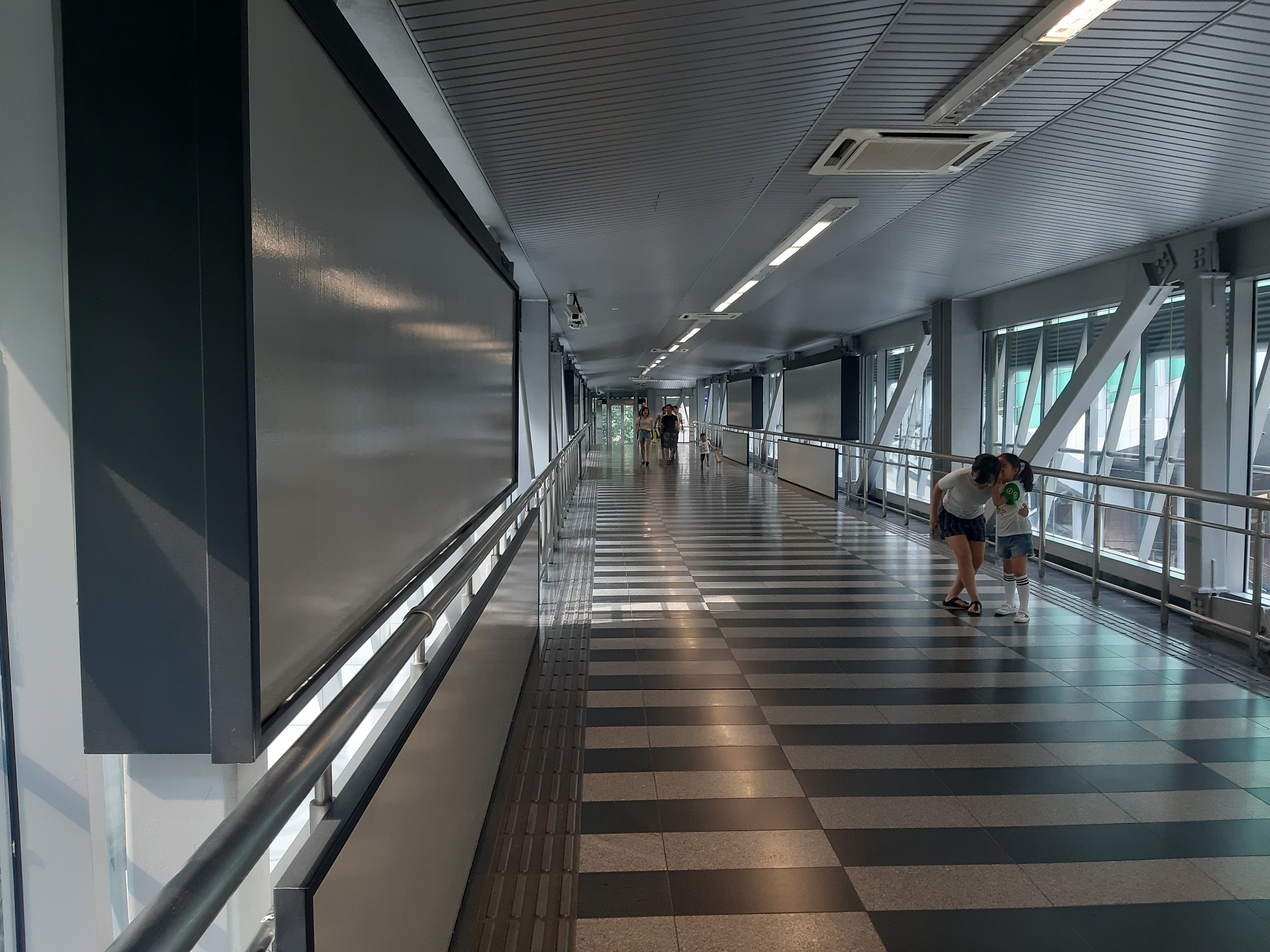 Covered pedestrian bridge that goes directly to Pavilion from the Kuala Lumpur Convention Center. The Kuala Lumpur Convention Center links to KLCC Suria through an underground tunnel.
Covered pedestrian bridge that goes directly to Pavilion from the Kuala Lumpur Convention Center. The Kuala Lumpur Convention Center links to KLCC Suria through an underground tunnel.
I found that I can get from The Bed KLCC to Pavilion, KLCC Suria, or Berjaya Times Square without spending too long in the open if I walk the correct routes, though those aren't always the shortest routes (The route to KLCC Suria is a few km, but The Bed and KLCC Suria are a mere 600m away in reality). I also later found out that there is a route that goes from Pavilion to KLCC Suria completely covered the entire way - across a raised, covered pedestrian walkway, through the Kuala Lumpur Convention Center, and through an underground tunnel. Wow!)
Plus, I’m British, so I don’t mind rain.
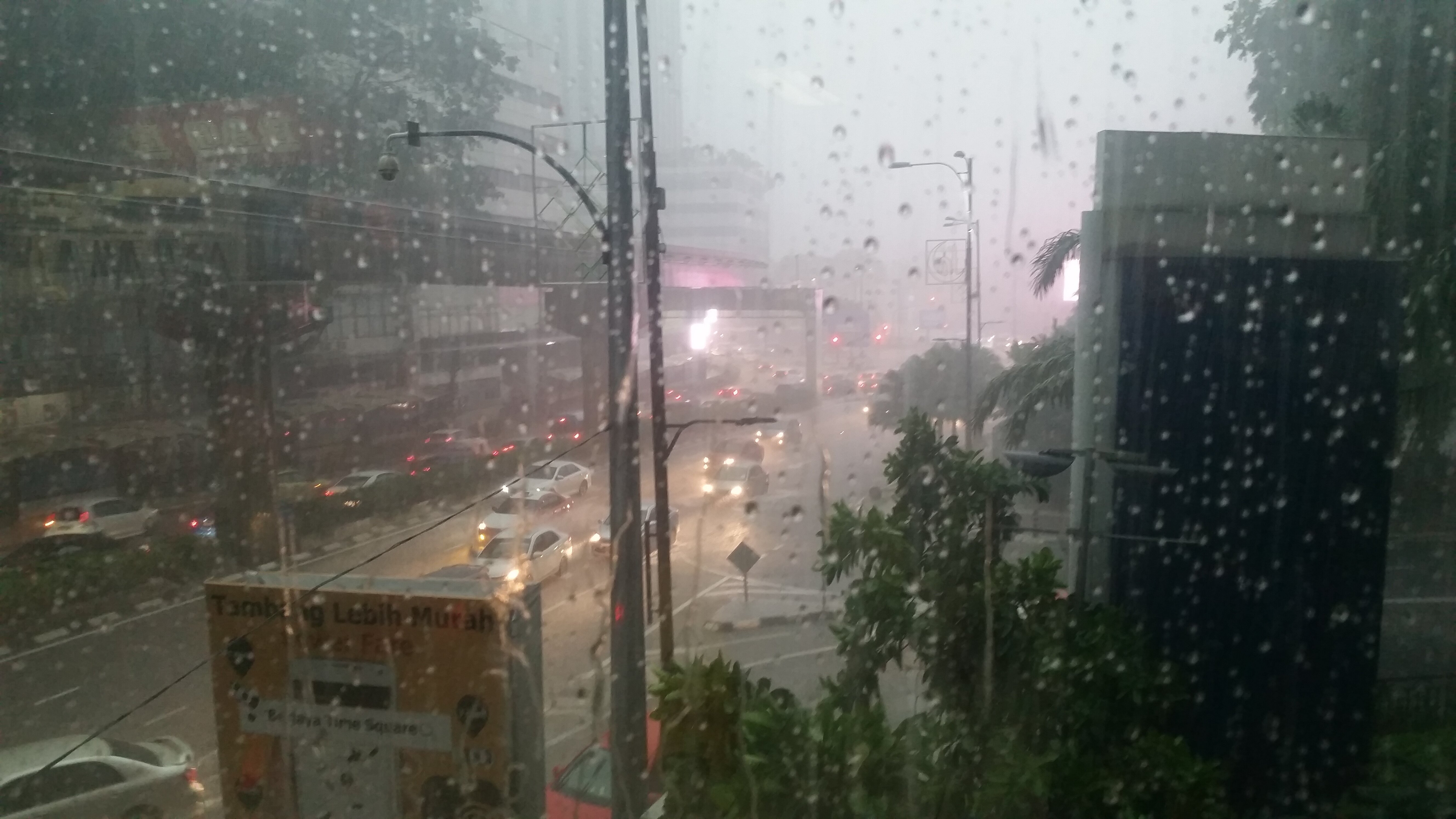 You can barely see down the road, the rain gets so hard.
You can barely see down the road, the rain gets so hard.
The problem with the rain is that the city literally floods, which is amazing and surprising given that there are smelly drains all over the place. When the rain gets too heavy, stairs start turning into waterfalls, puddles turn into ponds, and your feet will get wet up to your ankles. I’m not sure what the city can do about this - they have drainage - but it amazes me that a city that gets rain so frequently isn’t able to resolve the issue.
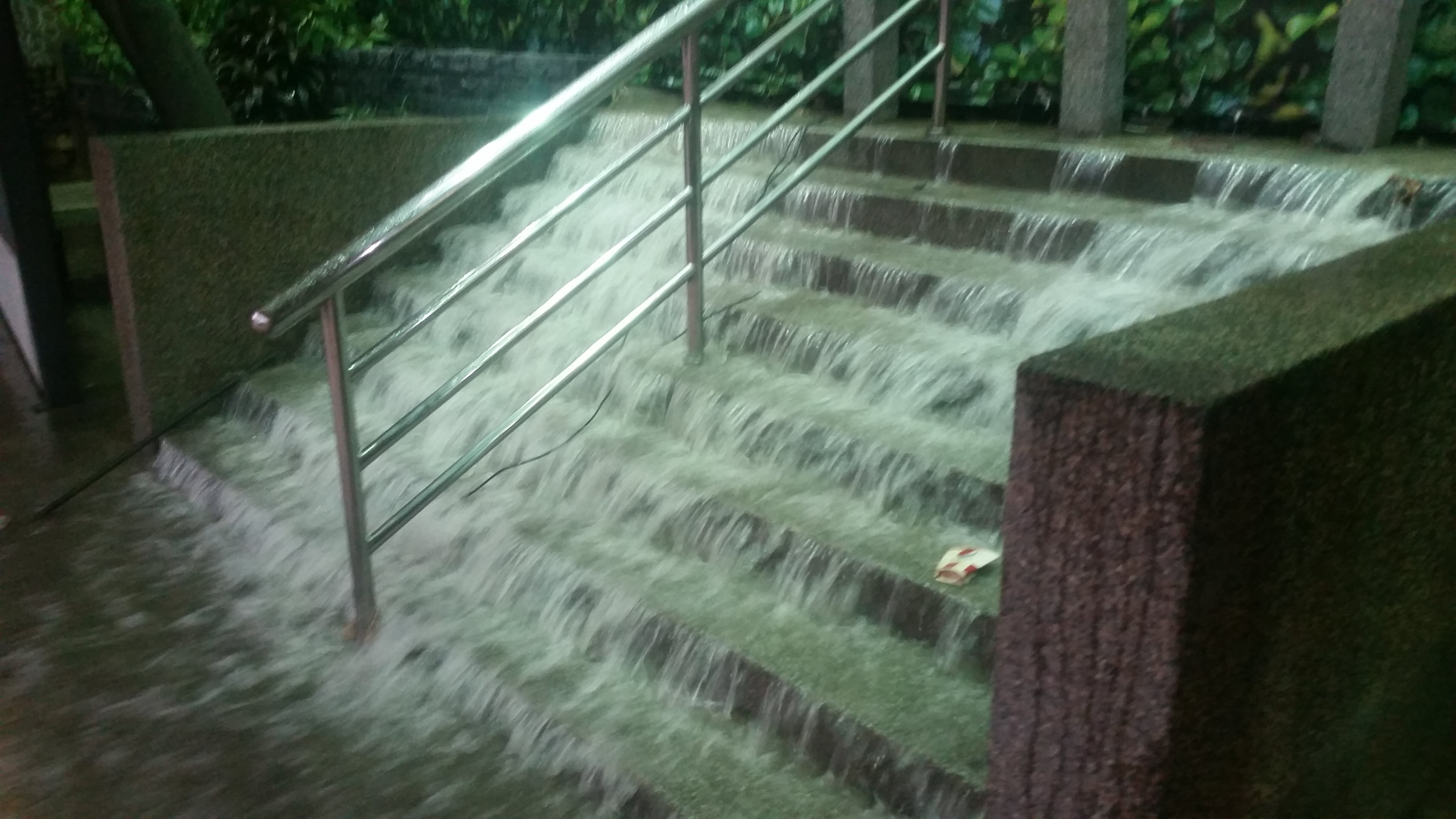 Stairs turned into a waterfall during heavy rainfall.
Stairs turned into a waterfall during heavy rainfall.
Thunder and Lightning were also frequent - I actually saw some from my plane when I first landed in Kuala Lumpur - but because of the nature of KL it can be hard to tell if the bright flash you just saw was from lightning or from some advertising big screen somewhere. I loved watching the lightning from my room during my first stay.
Shopping
The best place to go shopping is generally a mall. I don’t really like the Malls in Kuala Lumpur. They’re all completely massive (7+ floors…), and are overrun with designer shops like Gucci or Michael Kors. I feel like I’m being advertised to intensely (I started going around Pavilion and taking pictures of all the different brands of watch advertisements…). I know that these malls are in the capital of the country, but there’s a lack of more basic shops and products in the malls. Actually, there isn’t, you can find that stuff - but it’s so tucked out of the way that they might as well not be there. Jurn was looking for some jeans (or was it long shorts?) but couldn’t find any that he liked and that fit him. Whilst looking to buy a new Lenovo laptop for my friend, we went to a mall that specialises in computers and gadgets. There were three different Lenovo shops inside.
The nice thing is that products tend to be cheaper. I took the opportunity to by some electronic goods whilst I was here - my Bose QC35 II was £30 cheaper than on amazon.co.uk, my Samsung Galaxy A7 was £70 cheaper (!) at £188 (or perhaps £151 cheaper? See image).
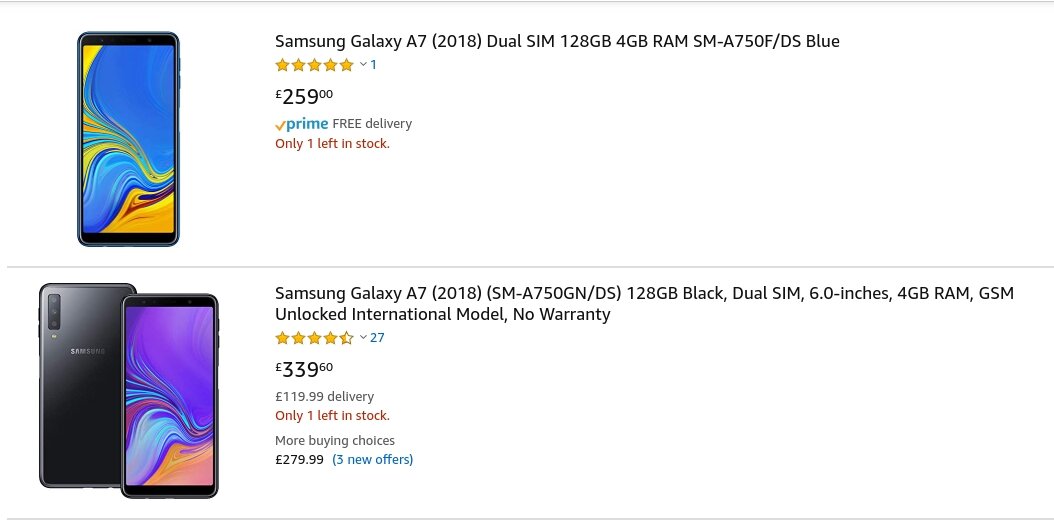 From what I can see, there is very little difference between these two listings of phone. I have the SM-A750GN/DS (Listed as £339 on Amazon), so I guess I got £151 off? But then that second listing seems like a scam. £120 delivery? Come on.
From what I can see, there is very little difference between these two listings of phone. I have the SM-A750GN/DS (Listed as £339 on Amazon), so I guess I got £151 off? But then that second listing seems like a scam. £120 delivery? Come on.
This isn’t just the buying power of Pound Sterling either. I bought the same model as my girlfriend did in November, except she bought hers in Bali. I got it for 25% less than she did, and actually my model was the (superior) dual-SIM 128GB rather than single-SIM 64GB. Similarly, when I bought new shorts to replace the ones I bought in Bangkok in November, I found that I was able to buy two pairs for the price of one pair of my original shorts.
Berjaya Times Square is my favourite of the malls, because it feels more ‘down to earth’ - though there are still armed guards with shotguns guarding watch and jewellery stores. The mall has dozens of floors, a theme park, archery range, laser tag, etc. So perhaps not that down to earth. Malls here in Malaysia feel sort of like spaces that were built to allow people to escape the heat; ideally (for the owner) spending all day (and all of their money) inside. Also, I don’t like that Berjaya seems to exclusively provide squat toilets. ![]()
Incidentally, Berjaya Times Square has this kinda-cool piano staircase and ‘squishy gel floor tile lights’.
Food
As I mentioned earlier, in Kuala Lumpur I mostly decided to eat from the food courts, so I don’t have much experience outside of those. The food courts have food from all different cultures - Malaysia, Indonesian, Chinese, Indian, Western, Arabic, Vietnamese, Japanese, etc - sort of like Malaysian culture itself. Some food courts - like in KLCC Suria - are quite expensive, but others - like the one in Berjaya Times Square - are inexpensive. In Berjaya, I frequently bought a heaped plate of clean, healthy food for 9.55MYR (£1.79, $2.28, €2.03).
 Healthy food from the Food King buffet in the Taste of Asia food court in Berjaya Times Square.
Healthy food from the Food King buffet in the Taste of Asia food court in Berjaya Times Square.
The reason I mainly ate from the food courts was because every mall’s food court had a vegetarian kiosk or two, and hence I felt that I could trust the food more. I could obviously go elsewhere and ask them to ‘take the meat out’ of a dish, but asking for something like that could easily go wrong.
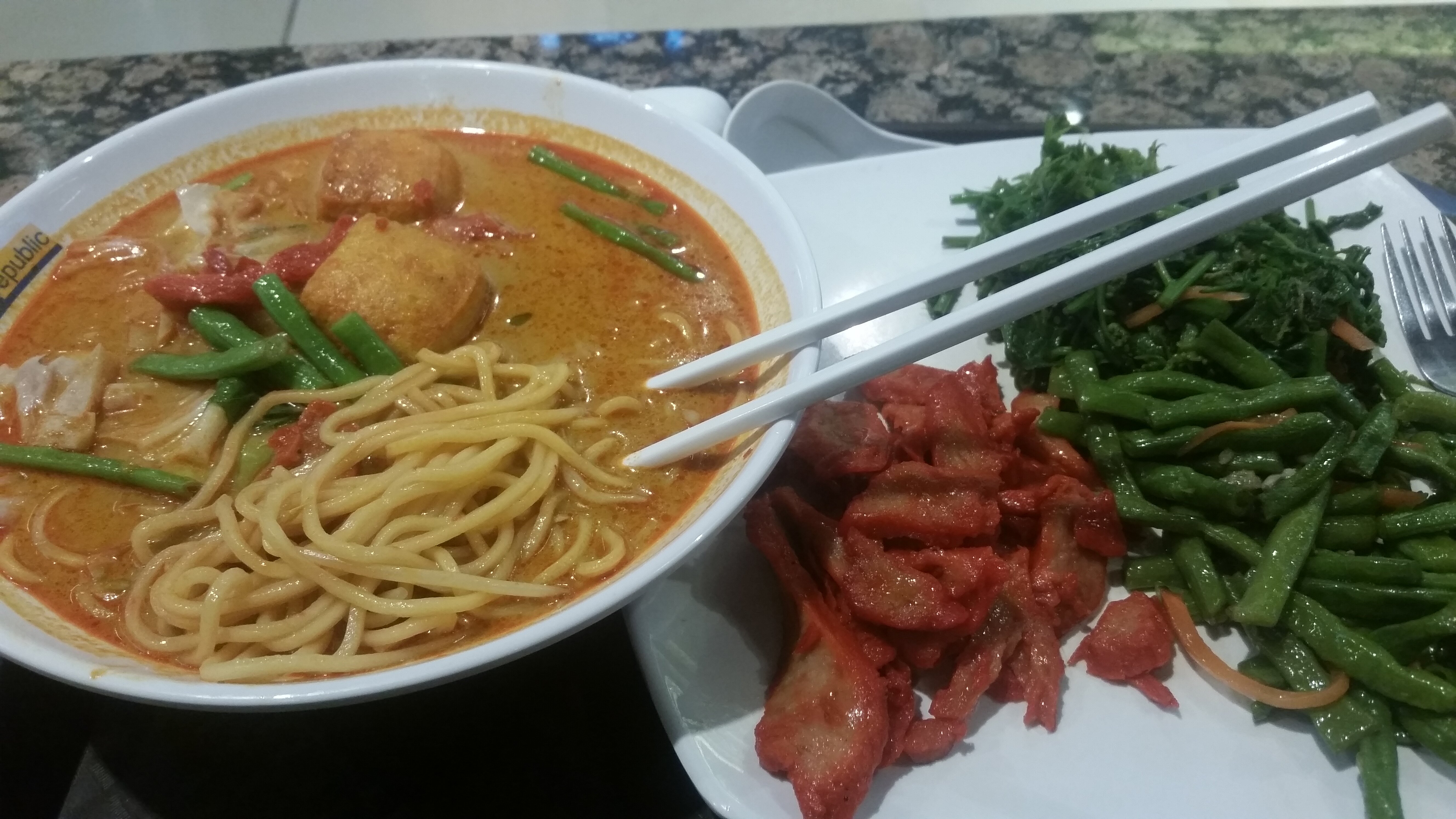 Curry Noodles with a handful of side dishes from the Vegetarian stand in the Food Republic food court in Pavilion.
Curry Noodles with a handful of side dishes from the Vegetarian stand in the Food Republic food court in Pavilion.
Street food is quite uncommon to see, though you will see it a lot at the Jalan Alor Street Food Night Market.
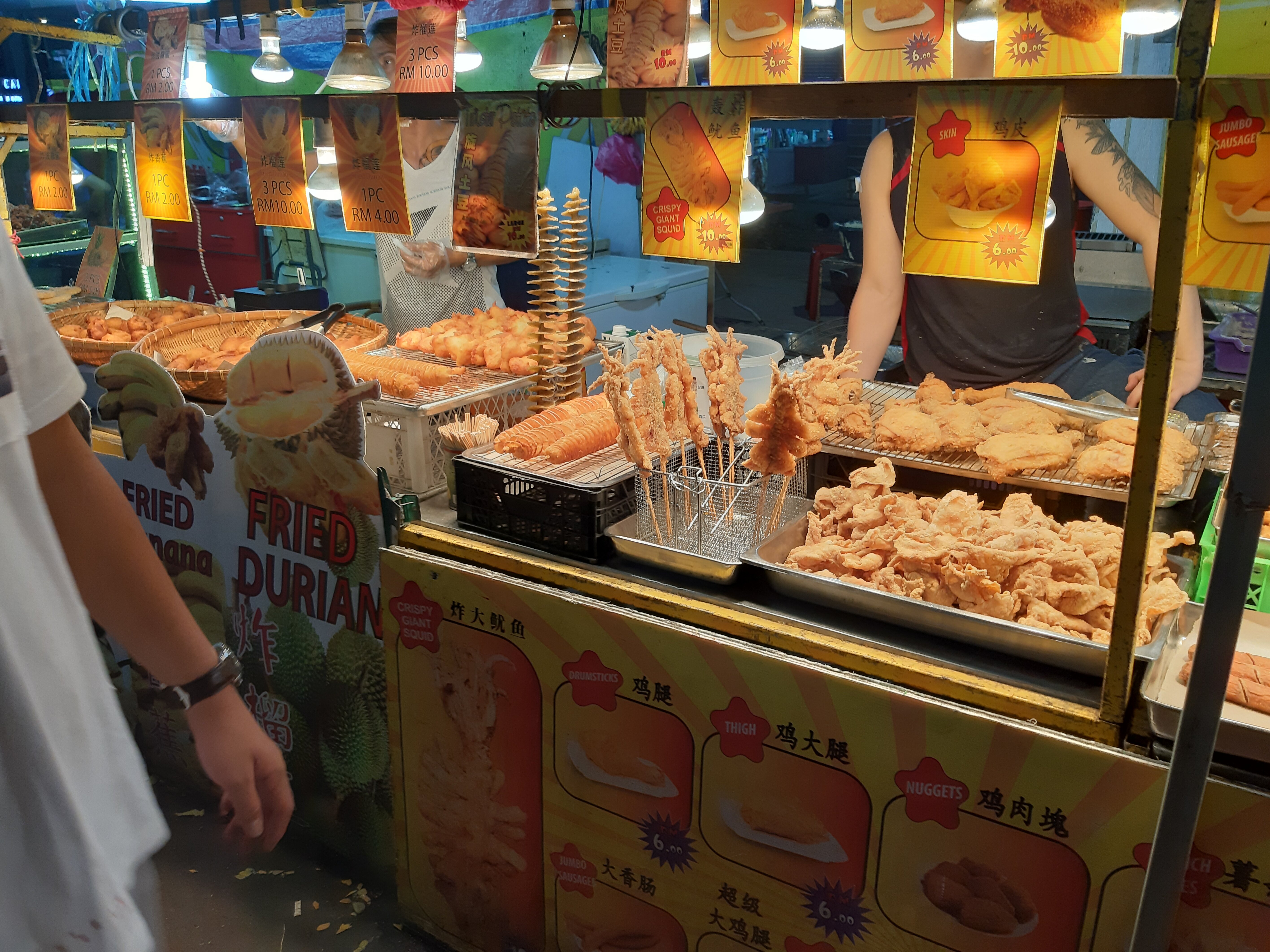 Street food at the Jalan Alor night market.
Street food at the Jalan Alor night market.
The big annoyance about Food in Kuala Lumpur is that all of the prices (excluding actual shops, we’re just talking restaurants here) are listed pre-tax - they add a 6% service tax on after you order. Some places choose to absorb this cost into their actual price. It makes it hard to know what the final price will be. Americans are probably used to this, as all American prices are shown pre-tax, but for a Brit it’s pretty frustrating.
Oh, and some of the buffet-style places tend to give wildly different prices for exactly the same order (as they decide to say I have a few extra portions of vegetables or something). I’m not sure if this is because they have some criteria like “if the plate is too fully, charge it as two portions”, but if they do, so staff clearly don’t follow that rule. Remember that 9.55MYR plate as food? Sometimes the price went as high as 15.90MYR. Ridiculous! I’m not one of those people to get into an argument when I just eat, so I never question it, instead I just learn which members of staff give me a good price and wait until I can go to them.
Running and Outdoor Sports
It’s incredibly hard to go for a good run in central Kuala Lumpur. There are apparently good spots outside of the city center, but too far to consider travelling to on a daily basis. Inside the city center is KLCC Park, which isn’t just a tourist attraction. It has a 1.2km running track that you will often see people running on. Other than that though, the city is pretty devoid of good places to run.
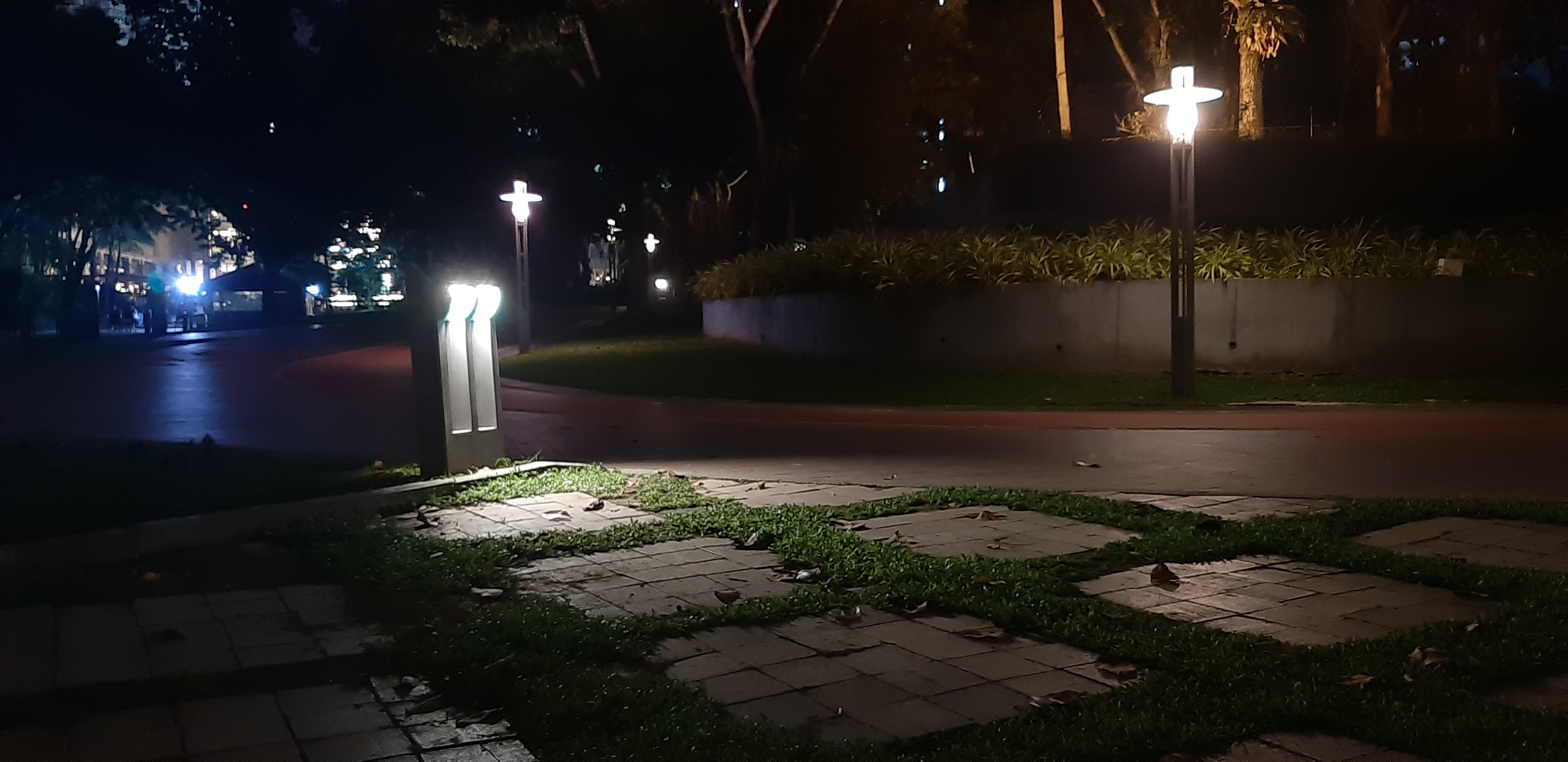 Start of the running track in KLCC Park, at night. You can run until 10PM.
Start of the running track in KLCC Park, at night. You can run until 10PM.
You might think that you’d be able to run along on the streets, but I wouldn’t recommend it. Whilst running through the city, you have to stop constantly to cross roads safely. You have to avoid crowds of people who are milling around aimlessly. There are lots of obstacles on the pavement (sidewalk) to avoid like motorbikes or random pipework. It got so bad that Daniel (pretty much addicted to running) basically avoided running for the entire time we stayed together.
Running also isn’t helped by the pollution…
Pollution
Kuala Lumpur is pretty polluted, and (at the time of writing, anyway) the data shows it. There’s a noticeable haze in the air that you can see light diffusing through. Whilst the city doesn’t particularly smell to me (when I’m not near a drain, at least), that might be that I have become desensitised to the smell of Asia. When I first got to Bangkok, I complained about the smell. Daniel told me that whilst it was an issue for him at first, he couldn’t really smell anything in Bangkok anymore.
Having said that, the two cities that I consider ‘my homes’ in the UK are also fairly polluted, so perhaps I shouldn’t complain.
But on my second trip, I noticed that I got a runny nose within days of arriving, got sick for two weeks in the middle of the trip, and then was developing symptoms of a second illness in the few days before I left. I also couldn't help noticing how many people were coughing or ill in my hotel. I'd find it hard to believe that pollution didn't have some part to play.
My Apartment
When I first moved in to my Kuala Lumpur apartment in January, I joked that the apartment was a nightclub because of it’s bright mood lighting. I didn’t realise then how some of the other ‘features’ of the place would begin to feel like a nightclub.
 My apartment was a nightclub (because of its lighting).
My apartment was a nightclub (because of its lighting).
To start with, the whole building was a lot more run down than I had been expecting. Obviously, I knew this when I wrote my last post and decided not to mention it. In part, I wanted to be optimistic, but also only really settled in after a week or two.
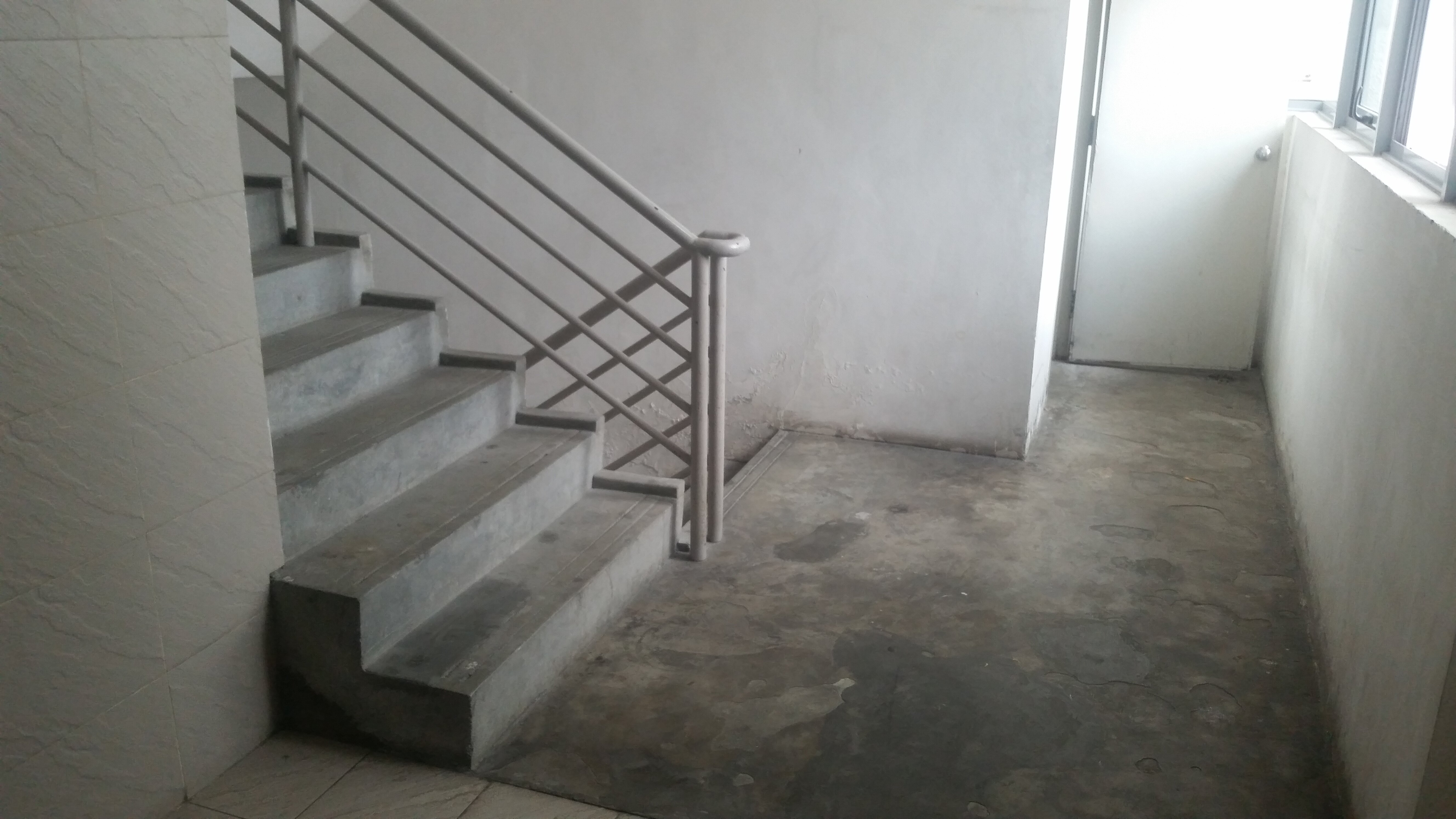 Stairwell in my apartment. It felt so weird to step outside the nicely-furnished apartment and see this.
Stairwell in my apartment. It felt so weird to step outside the nicely-furnished apartment and see this.
The worst parts of the building were the gym and the pool. They were terrible, which was a disappointment because they were a ‘selling point’ when we booked. The pool and gym were both on the third floor of the building, and we checked both out on our second day.
The pool was open air, and the nearby buildings (including our own building) towered above it. When we first checked it out, there were carrier bags, drinks cans, and cigarette butts floating in it. The floor was a mottled green colour and I couldn’t ascertain if it was paint or algae. Regardless, first impressions matter, and I didn’t swim there the whole time I stayed.
The gym was padlocked and you had to go to register with security every time you wanted to go in. The first thing I noticed was that there was water leaking from a light fitting in the ceiling into a bucket and that the floor and carpet was terribly water stained. The second thing I noticed was that there was no air conditioning of any kind, and that the room was hotter than outside. There was supposed to be a sauna somewhere too but we never needed to try and find it because the gym got hot enough when you worked out. There were two treadmills, two exercise bikes, an elliptical machine, and a combined pulldown/cable/extension machine. The treadmills would skip constantly, giving a horrible lurch which made your stomach churn and which felt incredibly unsafe. There was also a kids playground in the corner of the room, and I can safely say that I would never want any children I cared about to play on it. It had a set of monkey bars, which was useful for workouts.
Obviously this was entirely my experience and isn’t representative of Kuala Lumpur as a whole. We know from experience that Nadi Bangsar didn’t have any of these problems (though the location is arguably worse), which was sad. Jurn stayed in a really nice hotel (in a questionable location), and The Bed (where I stayed during my second trip) is really clean and pristine too.
Airport
This is a pretty minor gripe, but the airport layout is confusing. And also pretty terrible!
Kuala Lumpur International Airport has two sections, linked by train - KLIA1, and KLIA2. KLIA1 is also linked to a third ‘satellite terminal’ by train.
The problem is, to get from KLIA1 to KLIA2 - for example, if you need to make a transfer - requires you to have a visa. This specifically wasn’t a problem for me, but I think that it’s stupid, and surely must cause a lot of headaches for unaware travellers.
The second problem with this layout is that it’s not always clear on your ticket whether you are flying from KLIA1 or KLIA2. It obviously doesn’t really matter where you arrive (unless you need to transfer!), but when you need to board a flight it’d be useful to know where to go. On my first trip to Kuala Lumpur, we went to KLIA1 and found out that our flight was actually at KLIA2. We then found out that transfer from KLIA1 to KLIA2 had a charge of a few ringgit, payable by cash only. I had actually spent all of my ringgit (no point keeping them if I don’t think I’ll come back!) so would have been in trouble if Daniel hadn’t been there to lend me a few.
Oh, and the guards barely even seemed to glance at the X-Ray scanners. Which is… comforting? ![]()
Other Considerations
The other thing that you have to consider about why I struggled with Kuala Lumpur is that I had just left Chiang Mai. Chiang Mai is one of my favourite places I have ever visited, and I think it changed what meter I hold other places to. I keep having to remind myself that Chiang Mai is an exception and there are reasons that it is famous within the Digital Nomad community. I probably shouldn’t compare places to it. I loved my Southampton (my university city), and I enjoyed my time in Zagreb, but would I have done if I went there directly after going to Chiang Mai? Perhaps not.
After being in Bali and seeing the problems there (lack sufficient pavement (or any pavement at all) in many places, lots of pollution from cars on the roads, mosquitoes, etc), I was also able to appreciate some things about Kuala Lumpur a lot more.
Kuala Lumpur is Kinda Lousy - So What?
Because of the bad things I wrote above, I found myself not wanting to explore Kuala Lumpur. In fact, I only really left my room to eat.
Compare this to Chiang Mai, where I loved everything about the place but got very little done.
During my first trip to Kuala Lumpur, I:
- Finally reworked an ancient pull-request I once had trouble with
- Created an interactive map of my travels
- Created an terminal-in-your-browser toy
- Was interviewed by CoderStory
- Wrote five blog posts
- Worked out a lot
So I think it’s safe to say that living in a city where you don’t really want to explore can be beneficial.
Kuala Lumpur can be kinda lousy - but that’s okay. If you’re like me, you’ll stay inside, be more focussed, and get more done than you might elsewhere. You won’t be tempted by external distractions and can get into a state of productive Zen.
Tips
A few quick tips for enjoying your stay in KL:
- Avoid this area unless you’re willing to get bothered by bouncers/massage-parlour-people/hawkers/etc. It can be a cool area to visit once or twice (and take pictures) but I did not enjoy regularly travelling through it.
- If you want to stay somewhere cheap but exceptionally clean, try out The Bed KLCC. It’s my favourite hostel/hotel-type place to stay in the city. It’s a ‘capsule hotel’, though it doesn’t exactly look like what I imagine when I read ‘capsule hotel’. You have your own space (perhaps 2mx1mx1.5m) that has a pull-down privacy blind; when you’re asleep you have the privacy that a hotel would give you. But you get the price (and facilities) that you would get in a hostel. It’s a nice compromise, and as I said, everything is exceptionally clean, so it doesn’t have that ‘hostel feel’. It feels like a hostel for business people. It’s centrally located and I love the place. It also has free breakfast and a space that you can work from 24/7.
- If you stay elsewhere, check that there are covered walkways connecting to your apartment/hotel. It’s incredibly important to be able to have dry routes that you can walk even when it is raining.
- Stay for a week or two first in pay-as-you-go accommodation (like a hostel or a hotel) before investing in a longer stay (like a month) in an apartment. Some people might love the city and be willing to stay for a long time, but others might appreciate being able to leave earlier. It might be marginally more expensive to do it this way, but it’s better than having to spend 2-6 weeks in a city you don’t like just because you already booked an apartment.
- If you’re debating about making a purchase, this is the place to do it. Cheap products abound.
P.S. I'm late to the party, but I recently got a twitter account that you can follow here.
